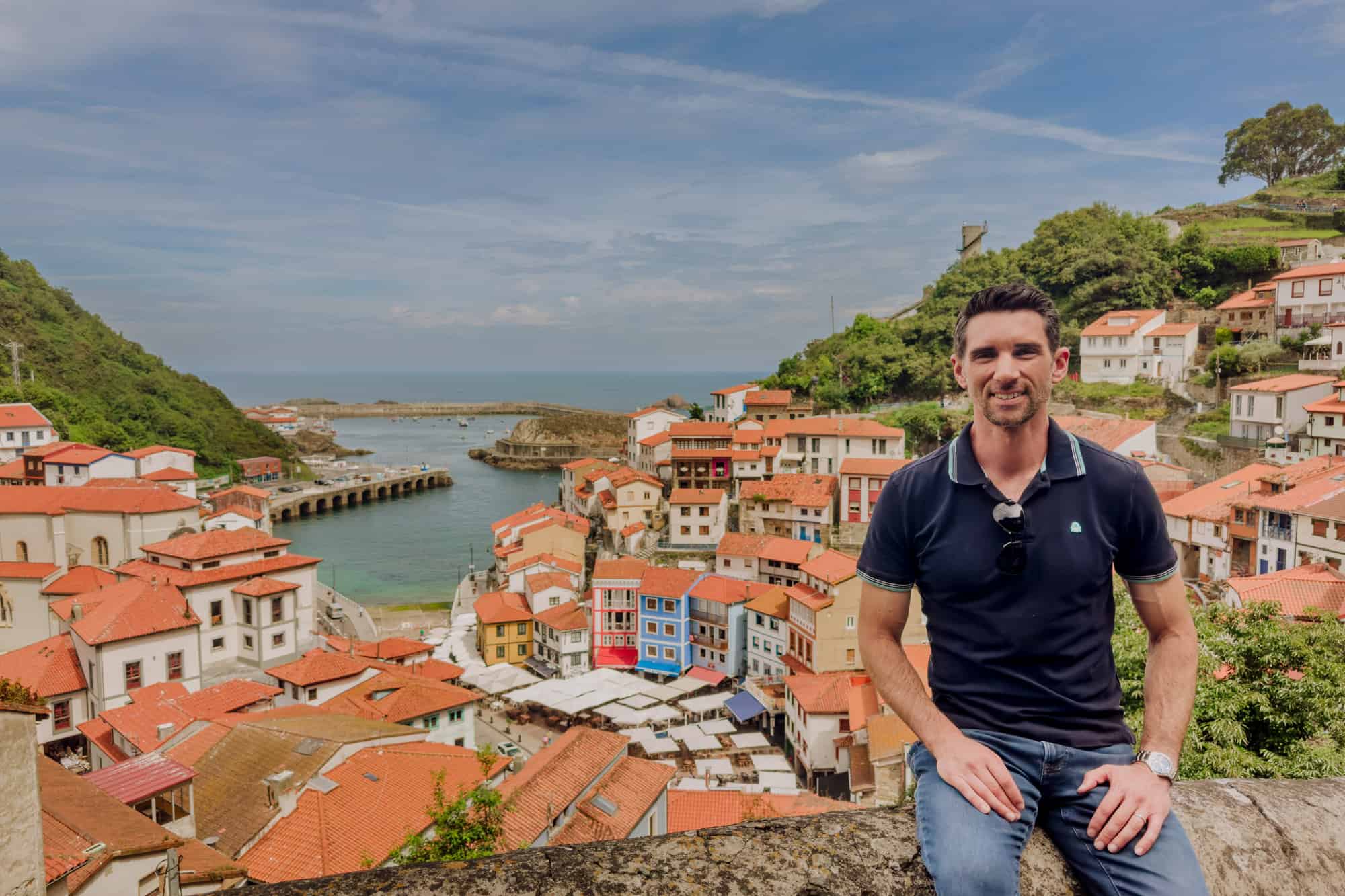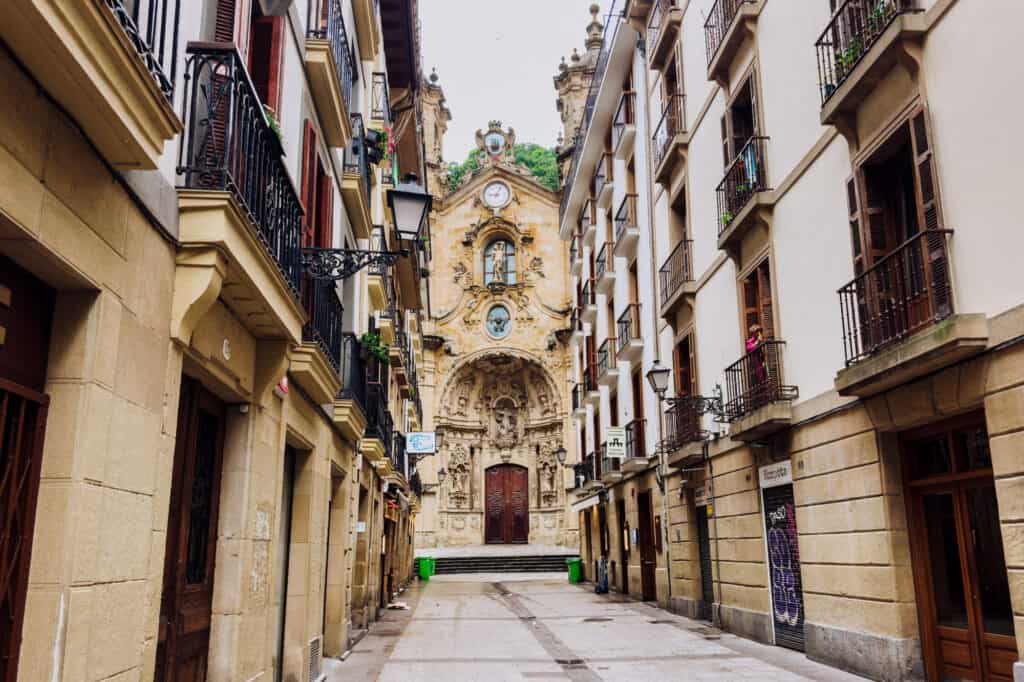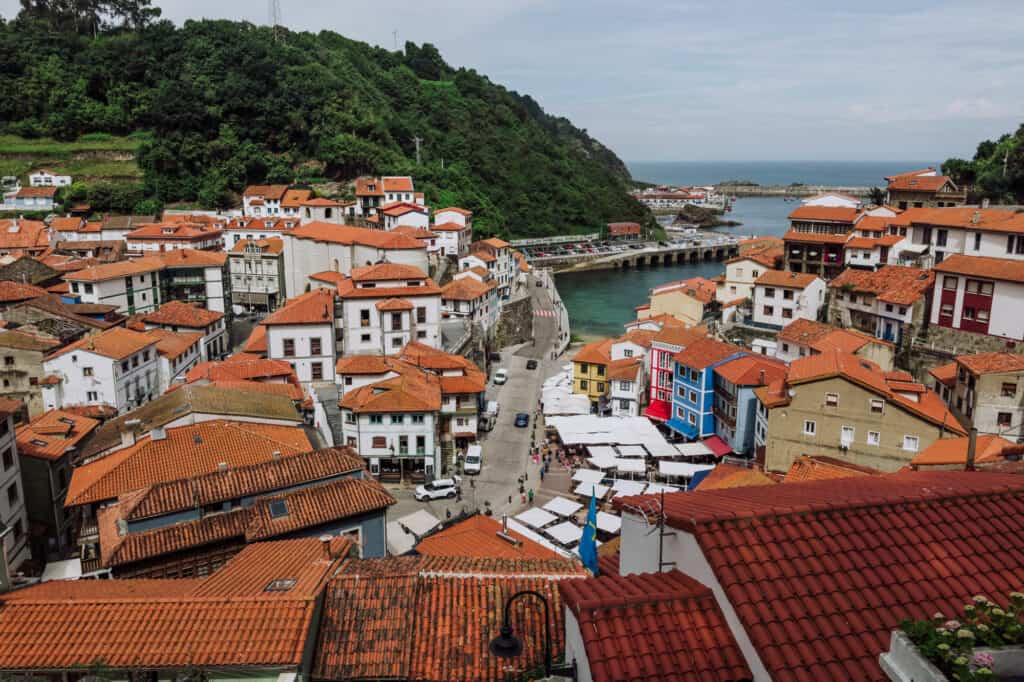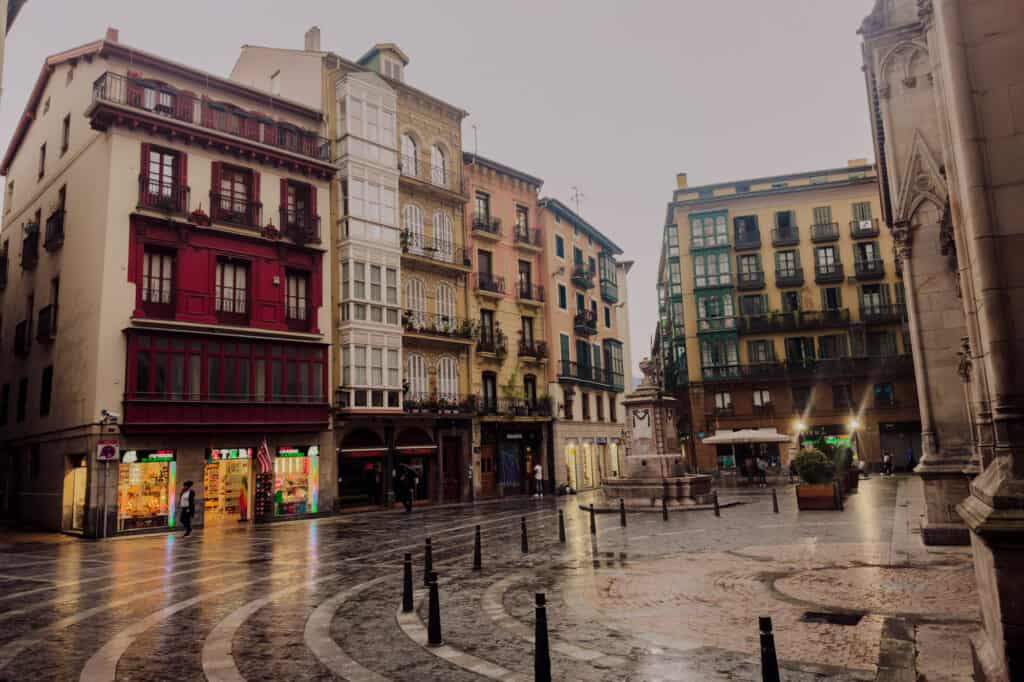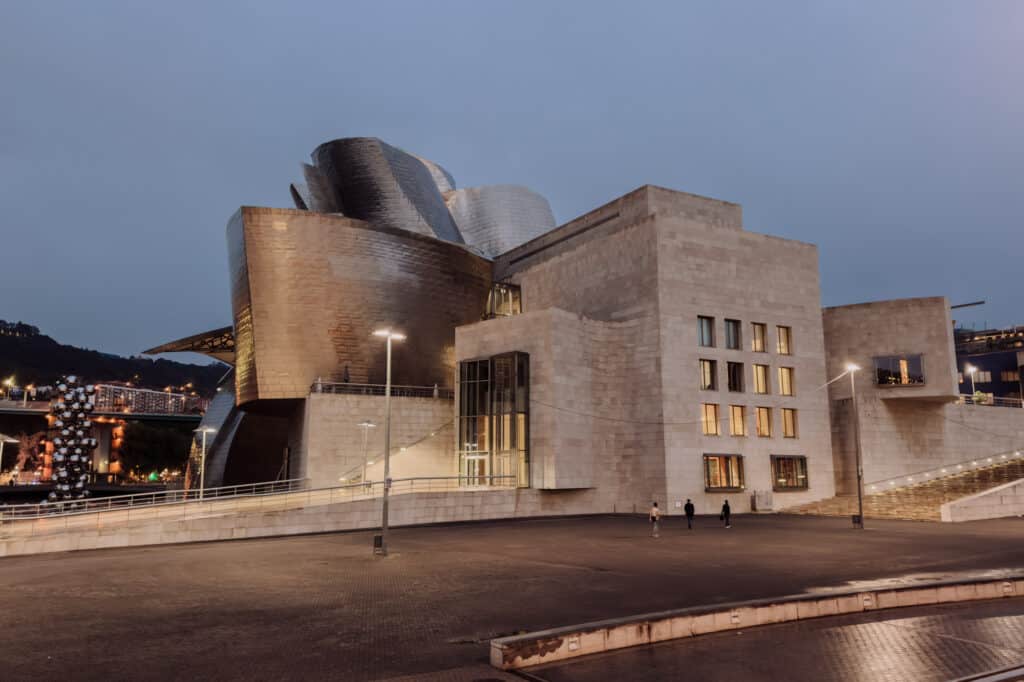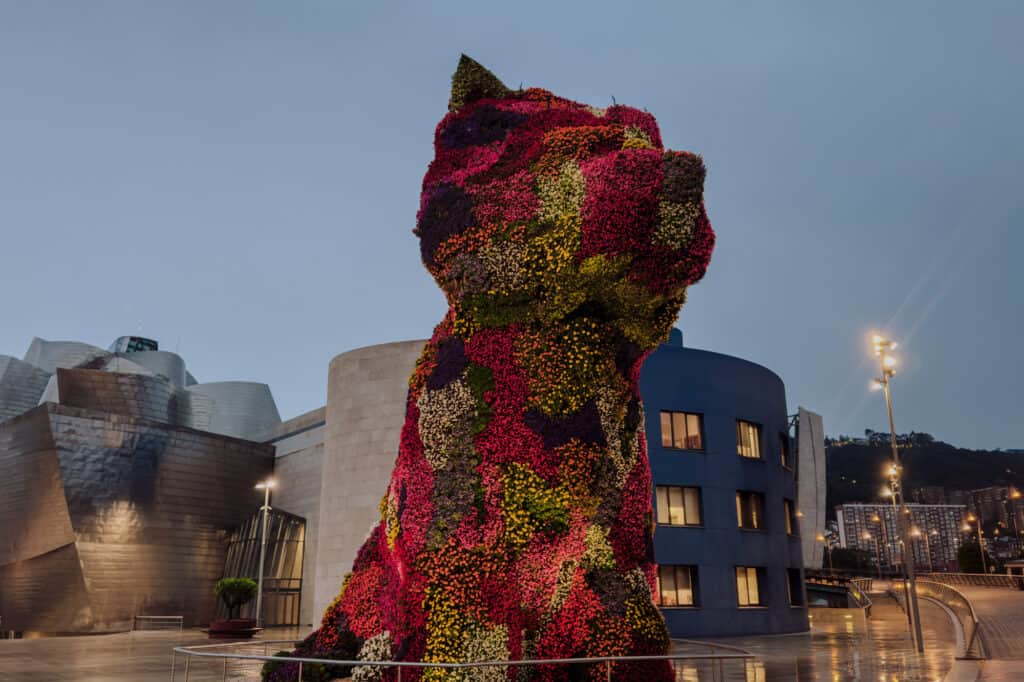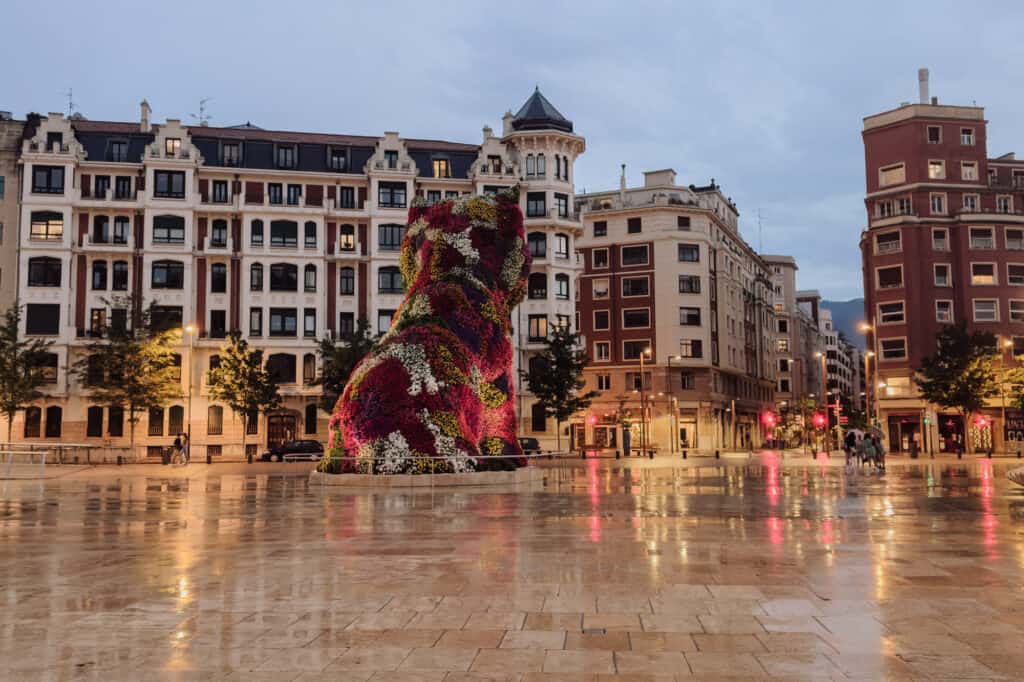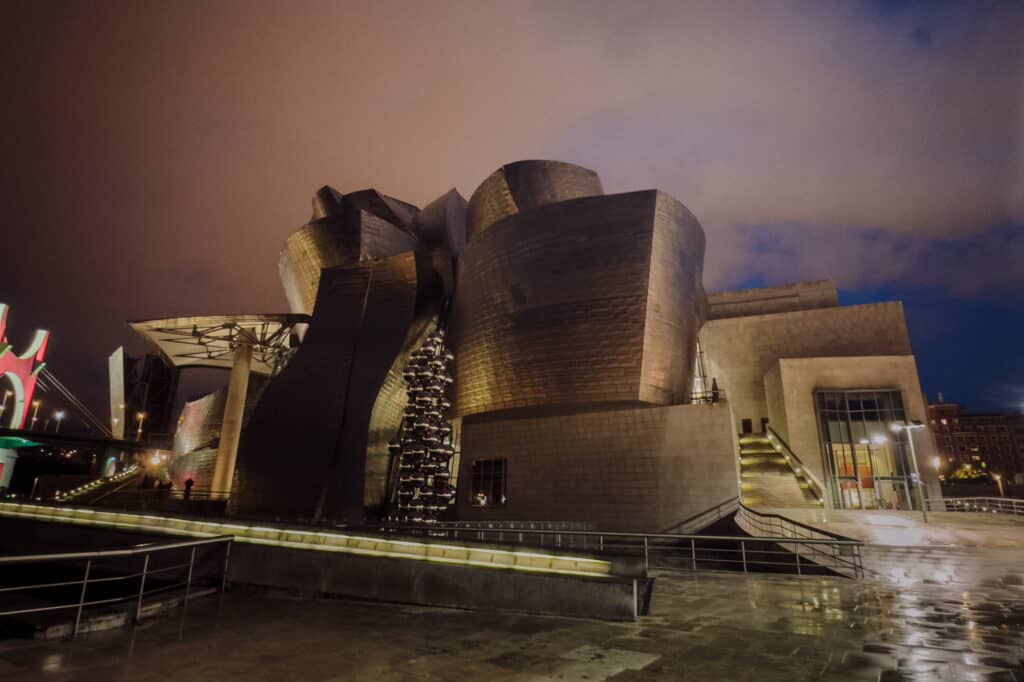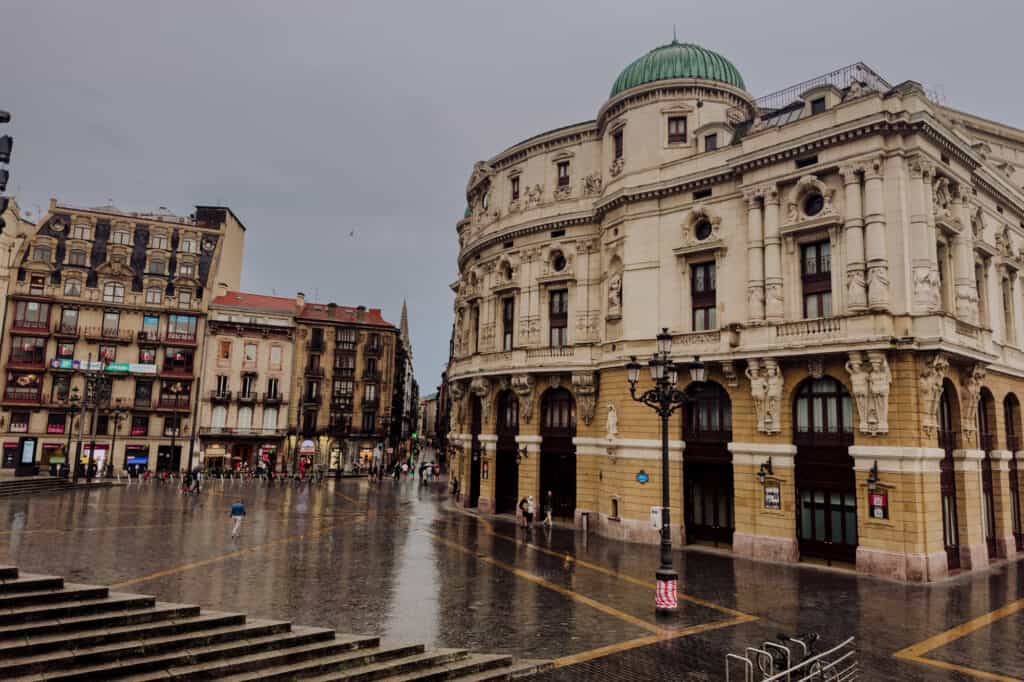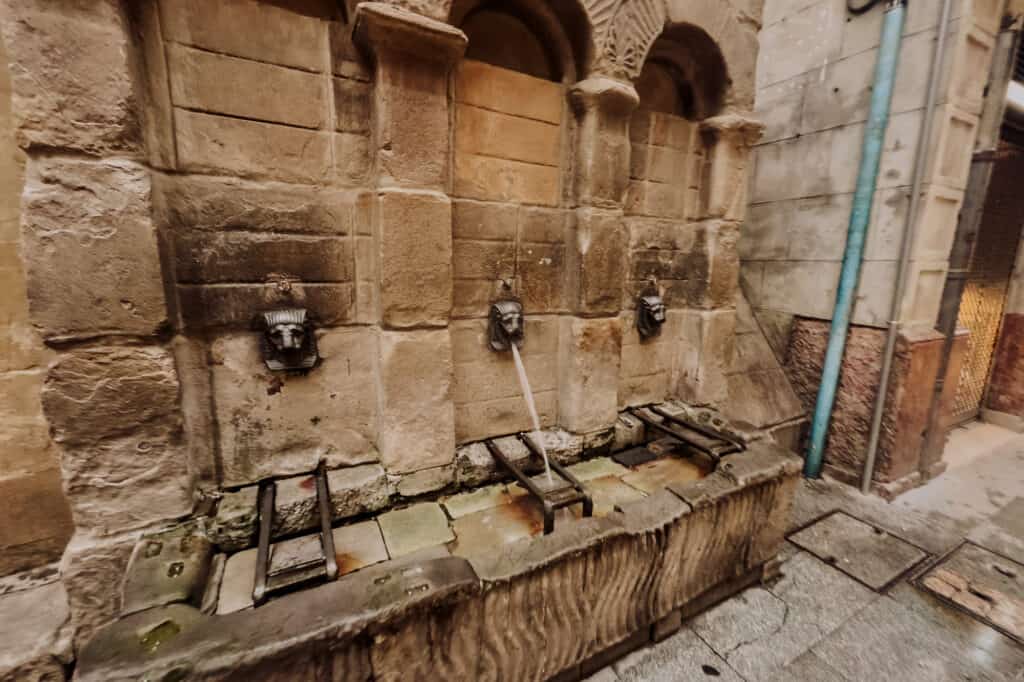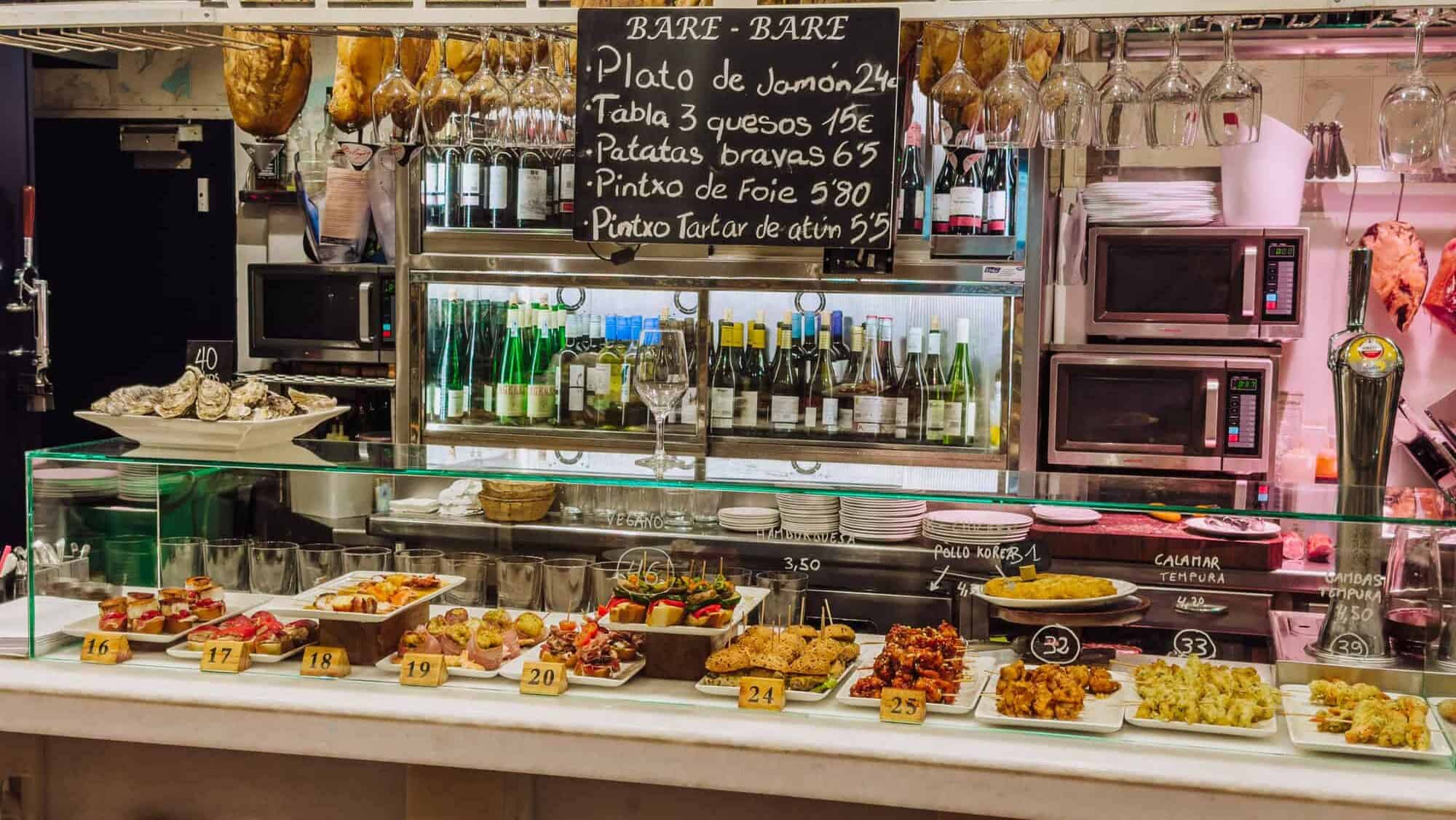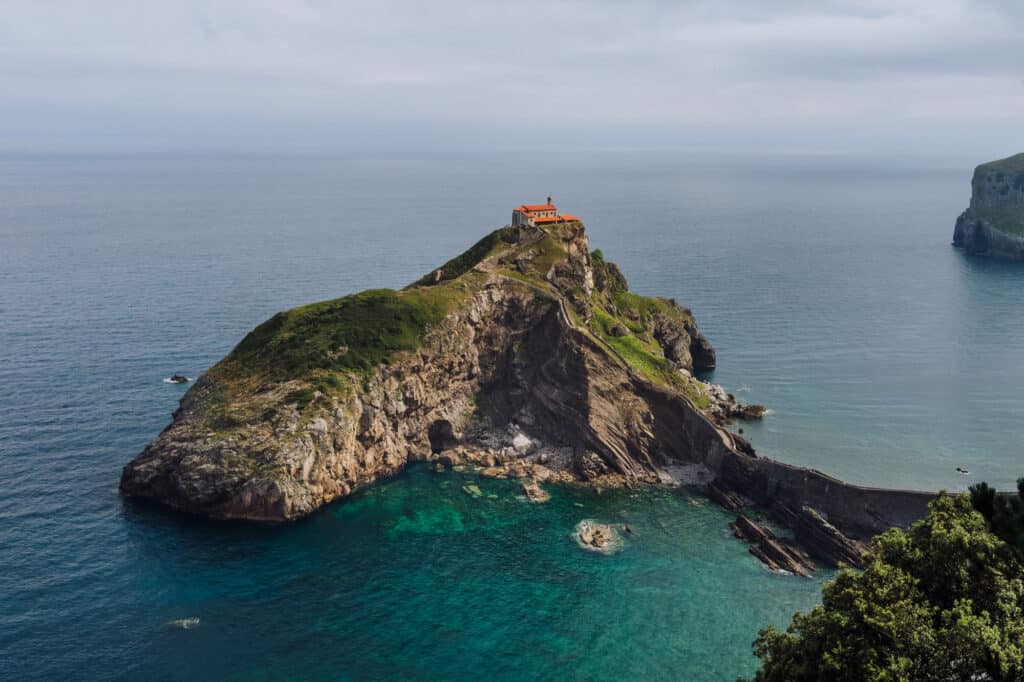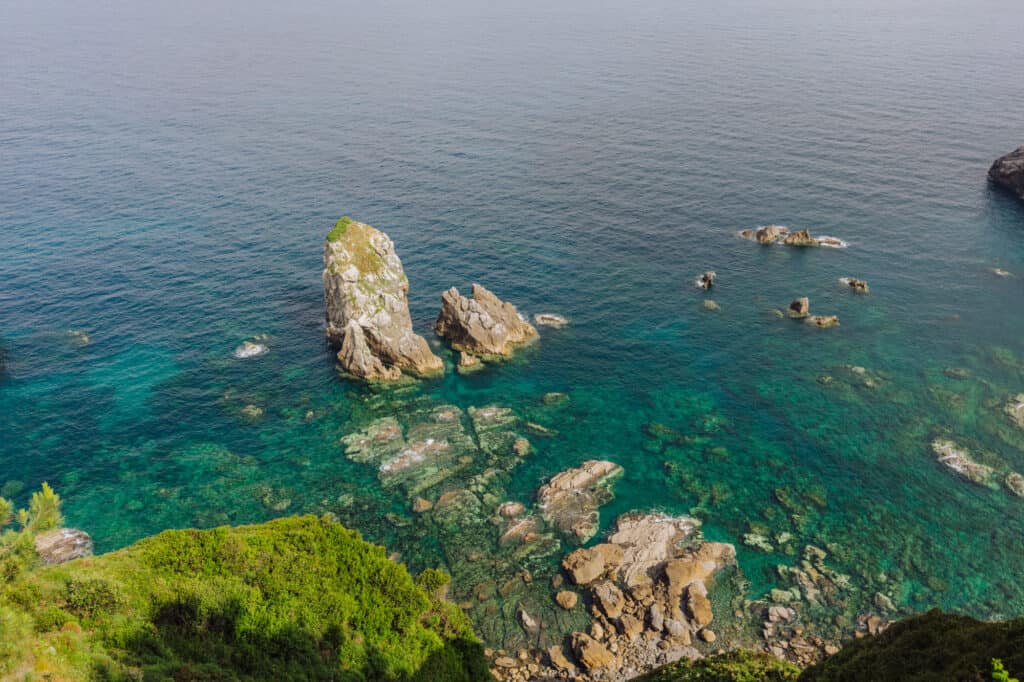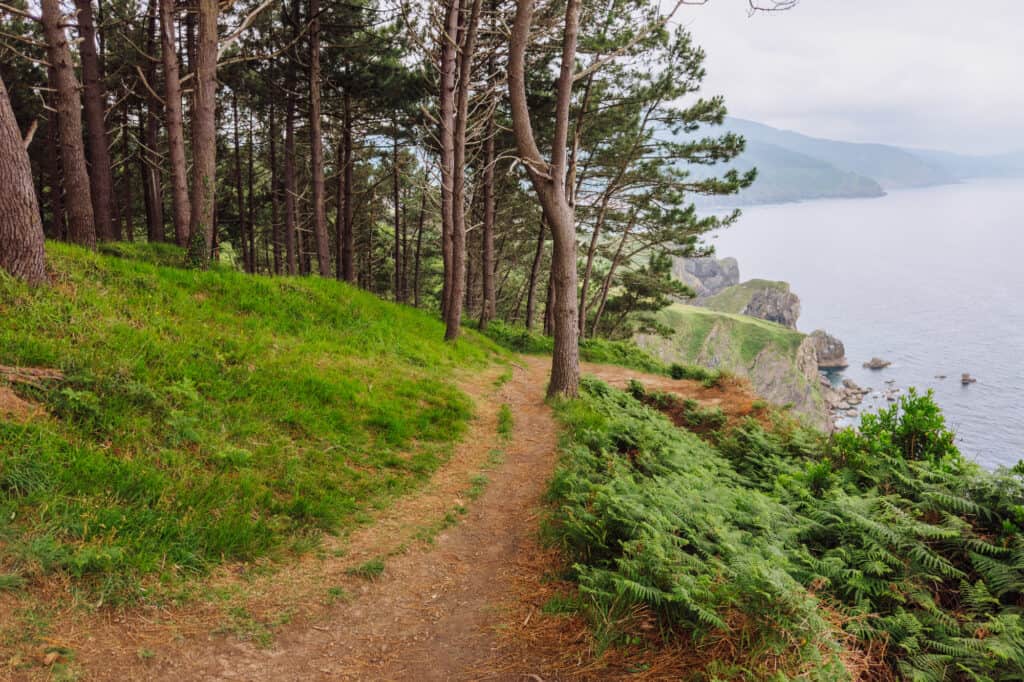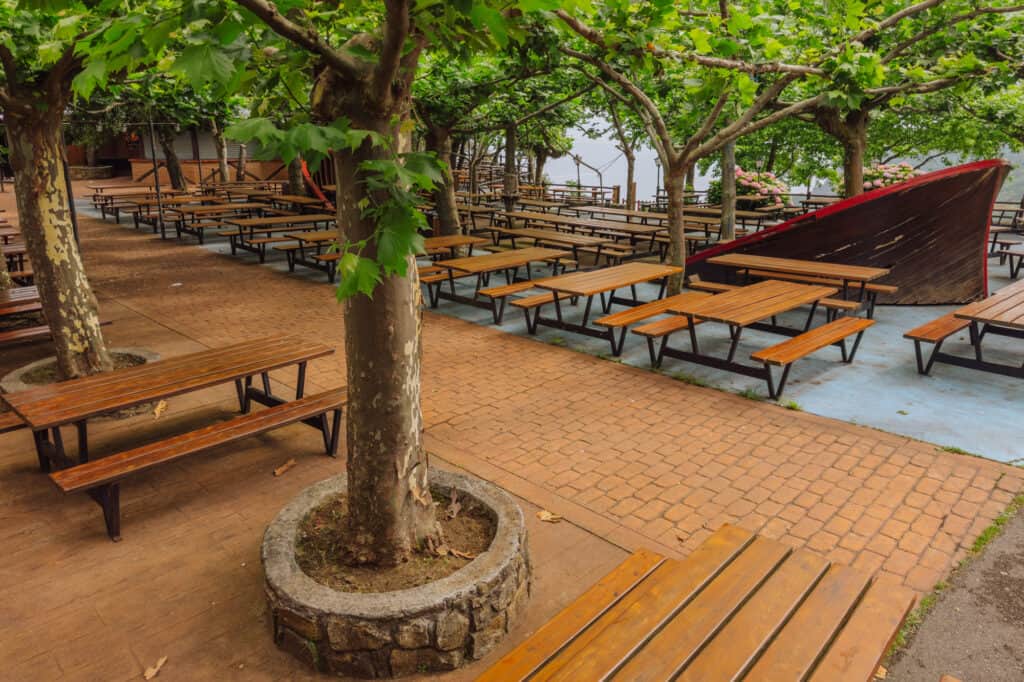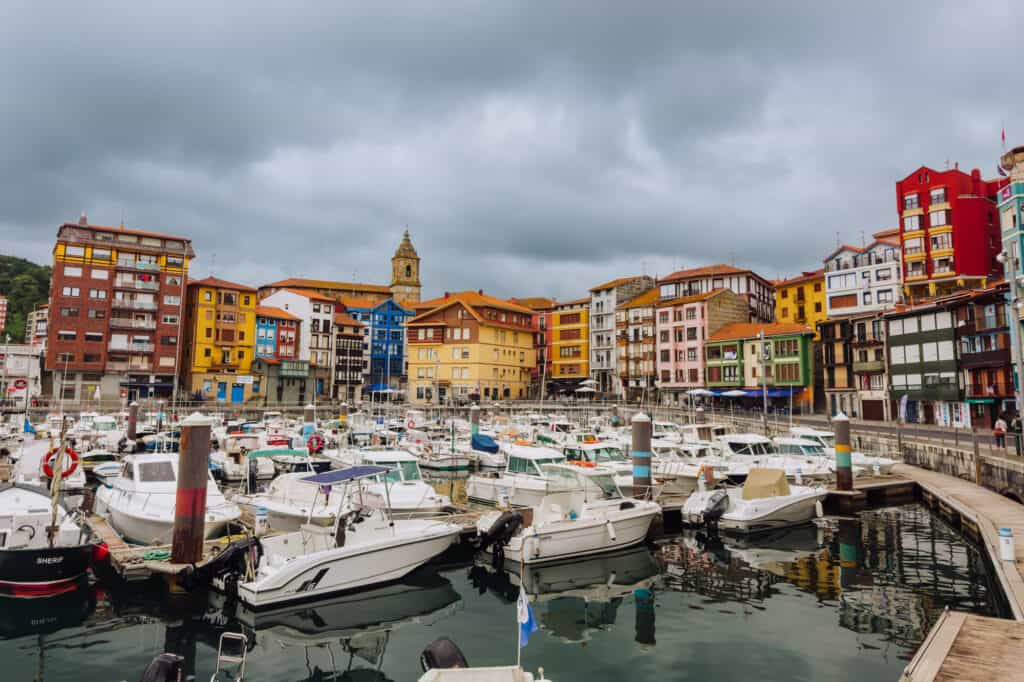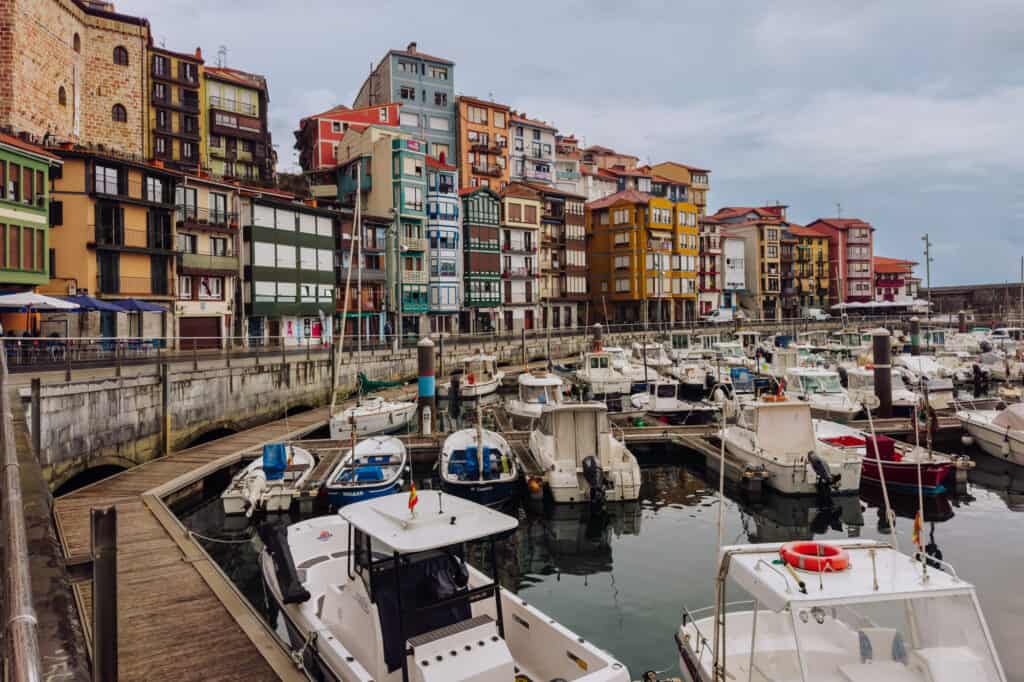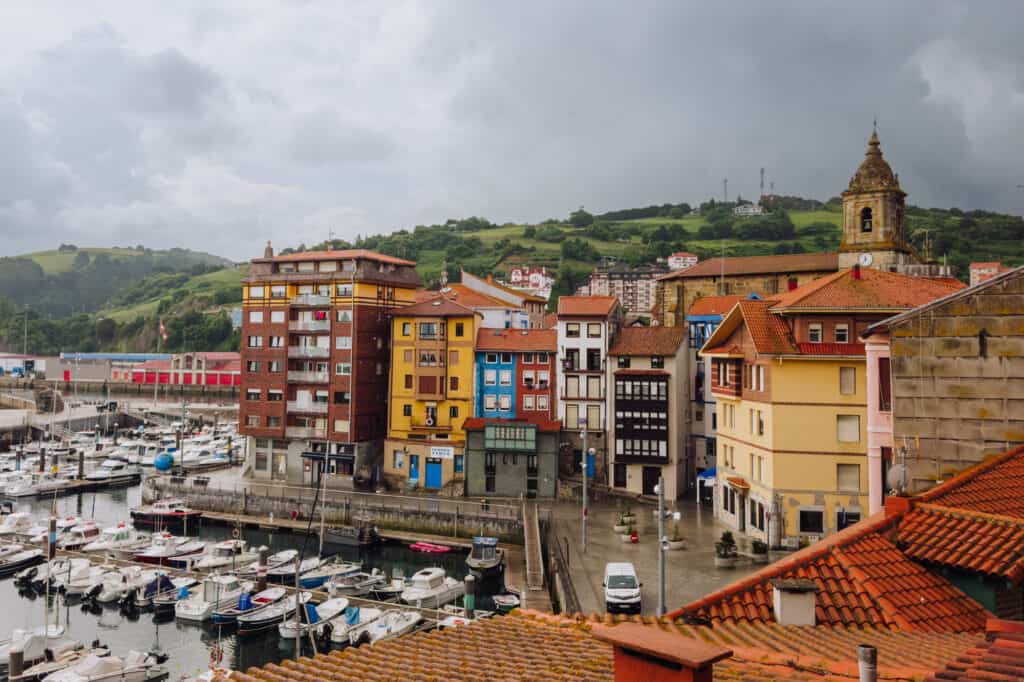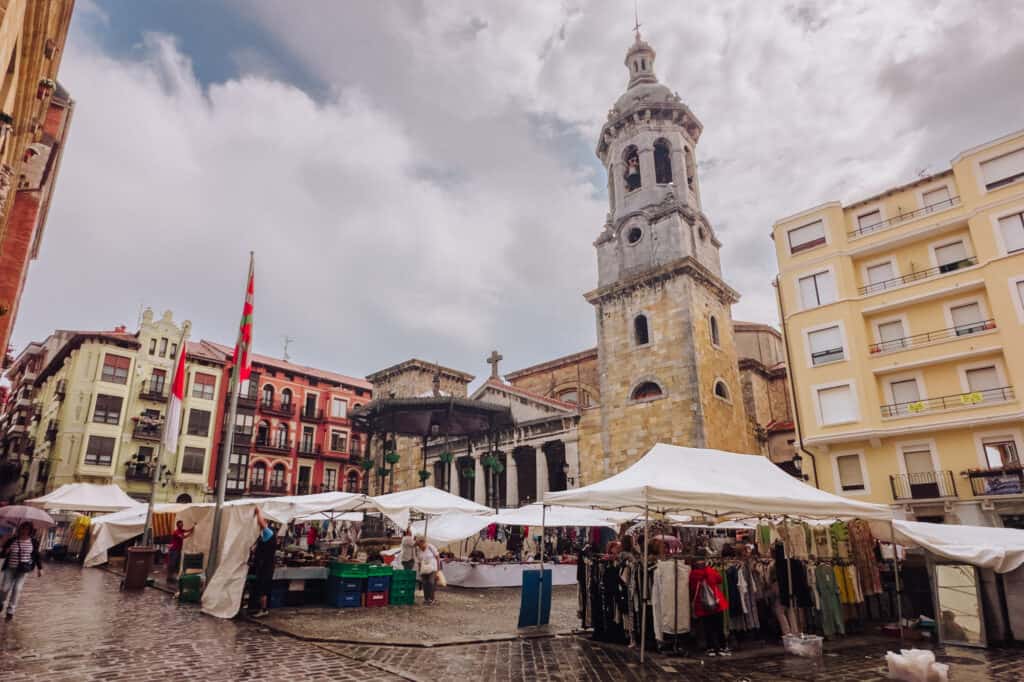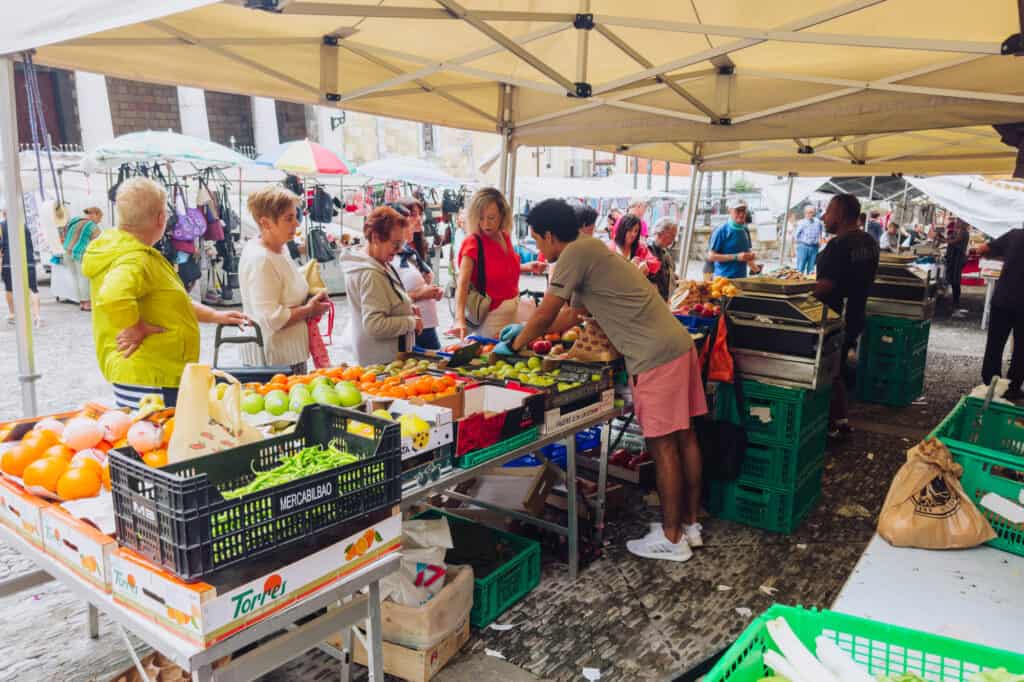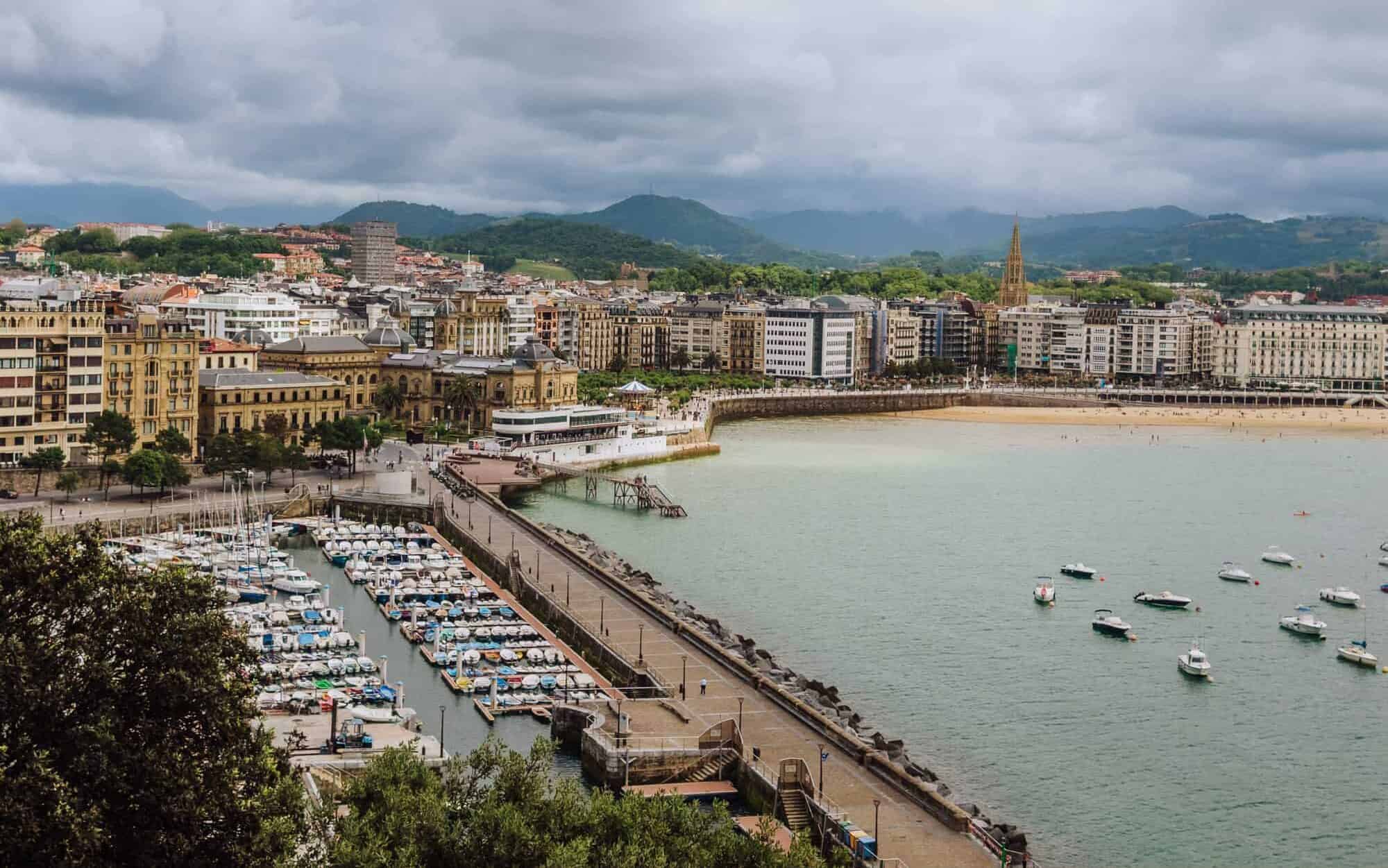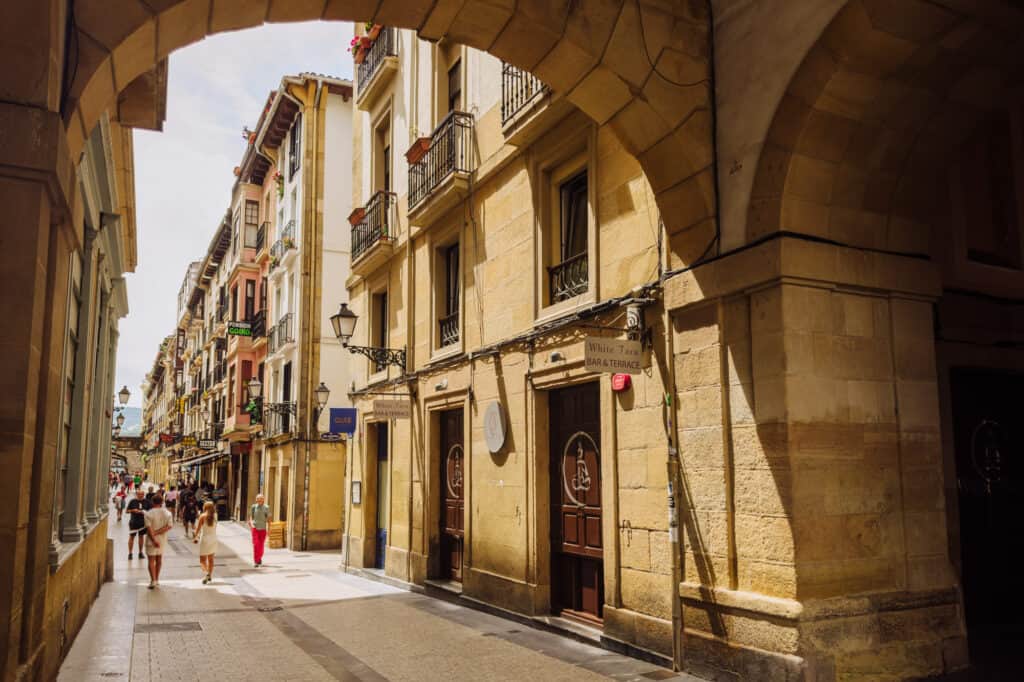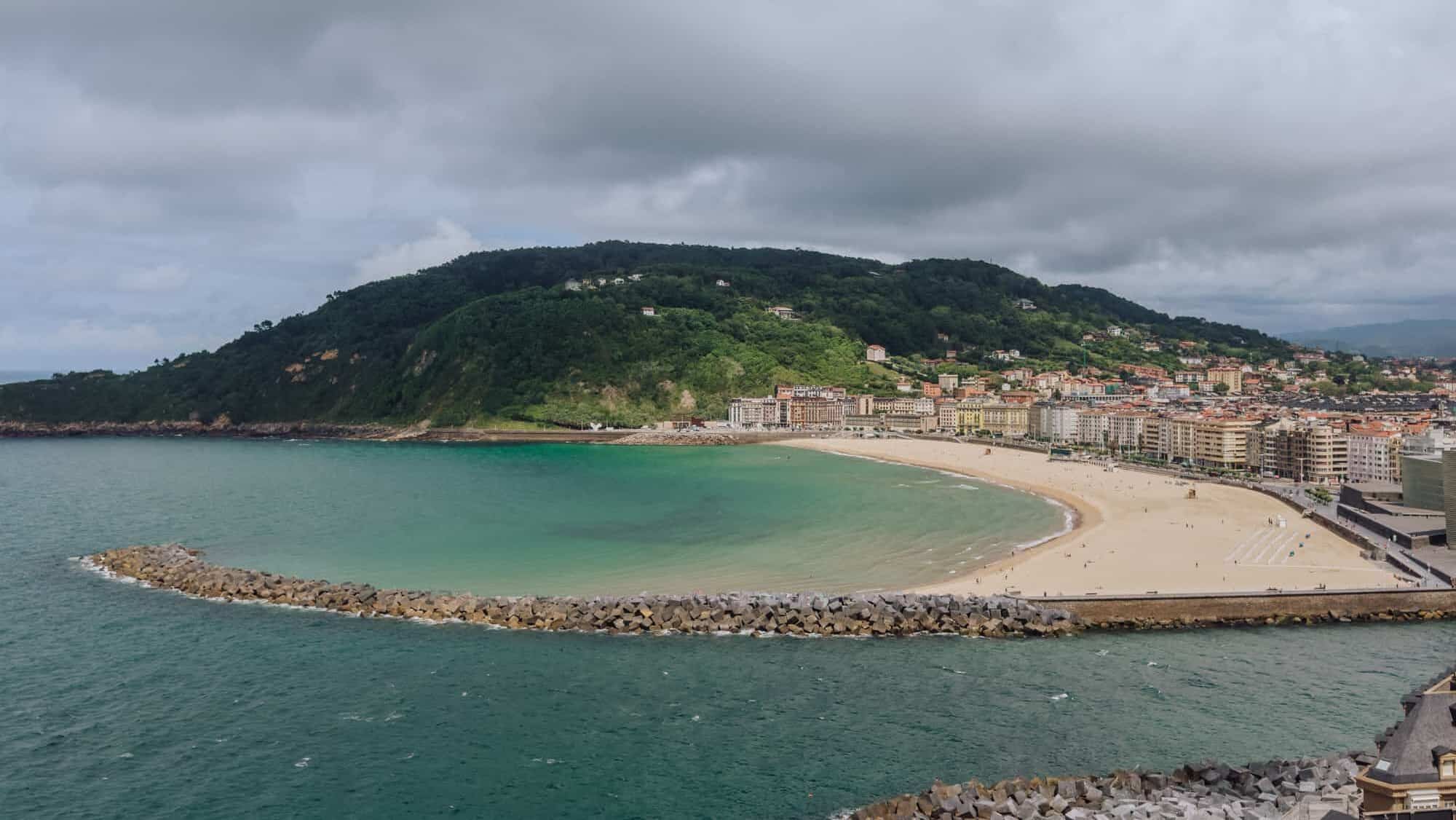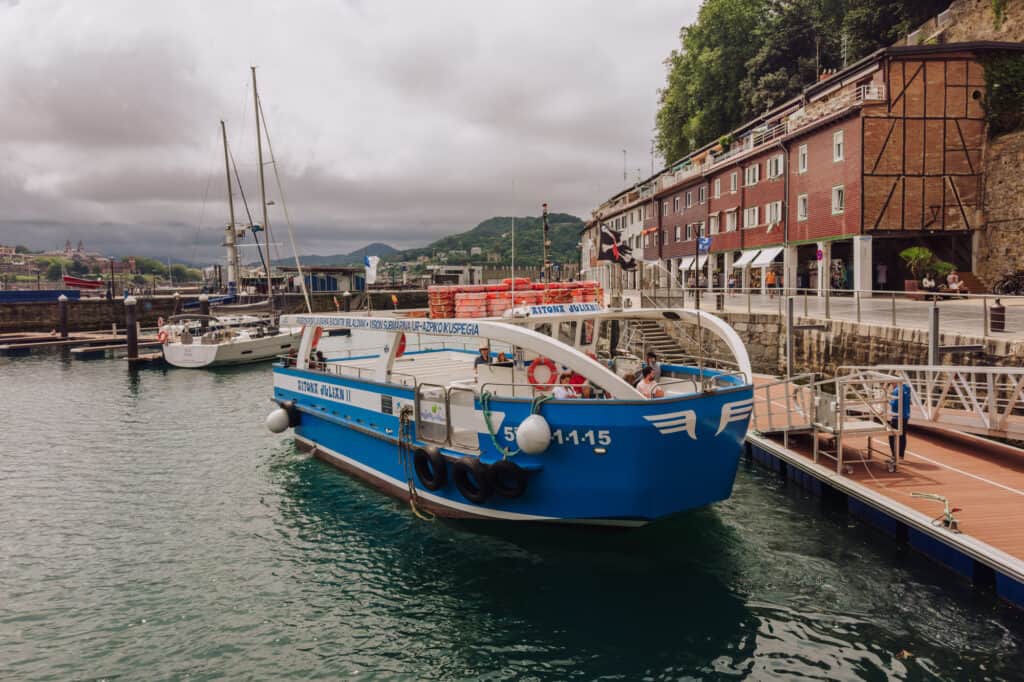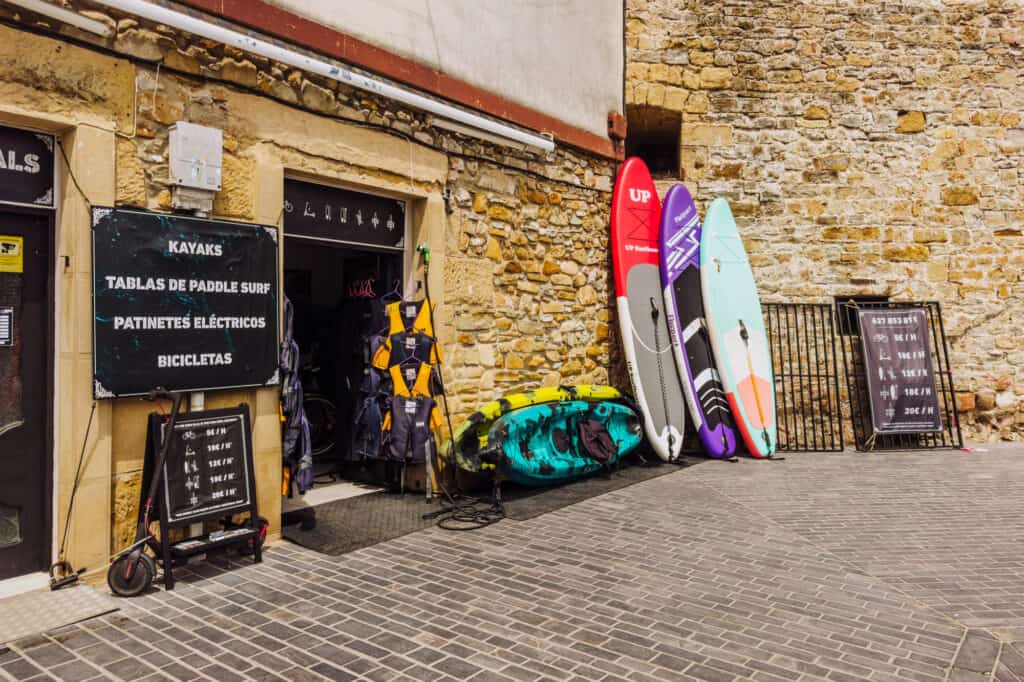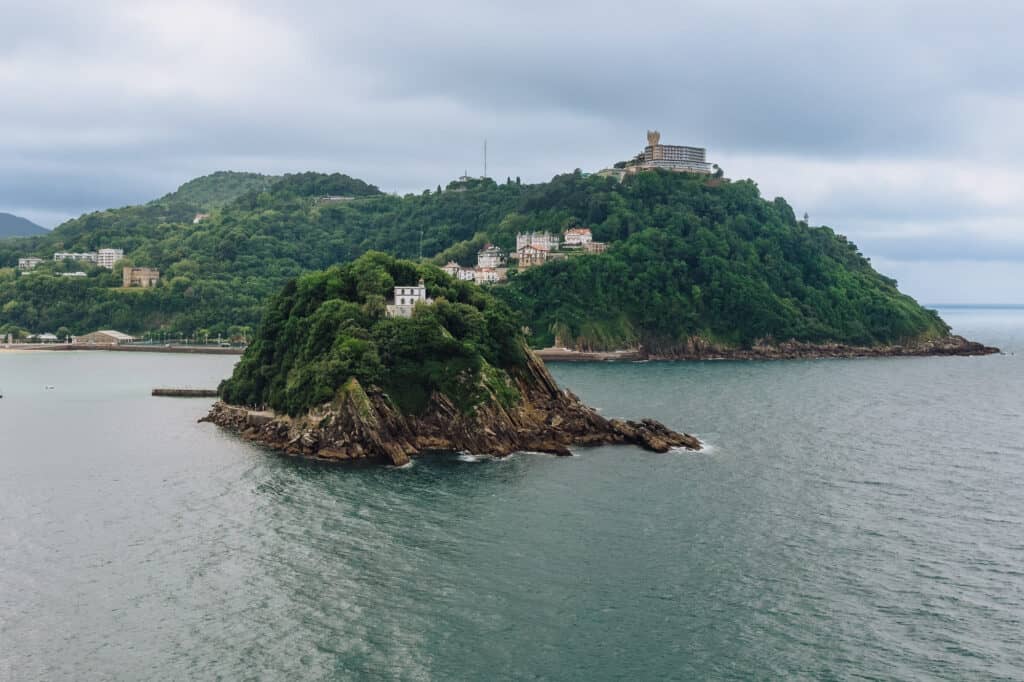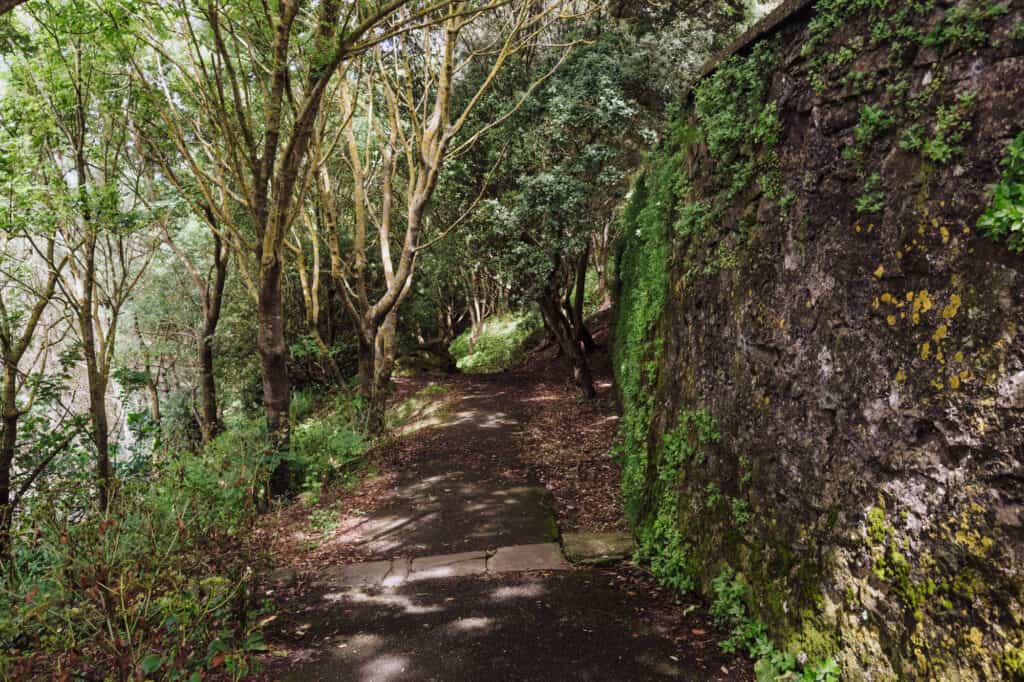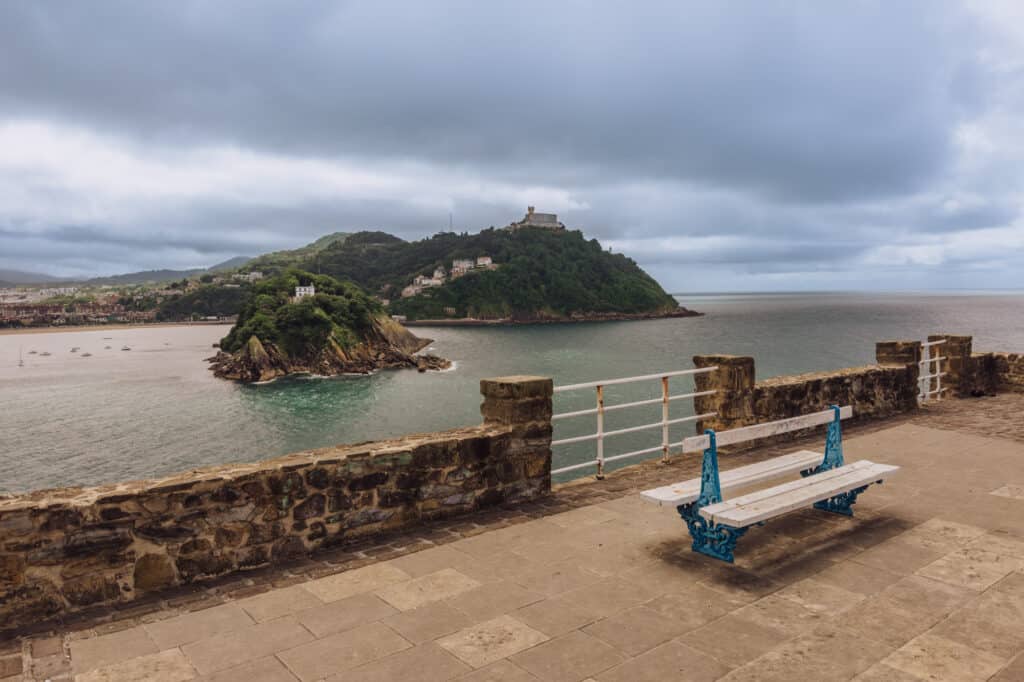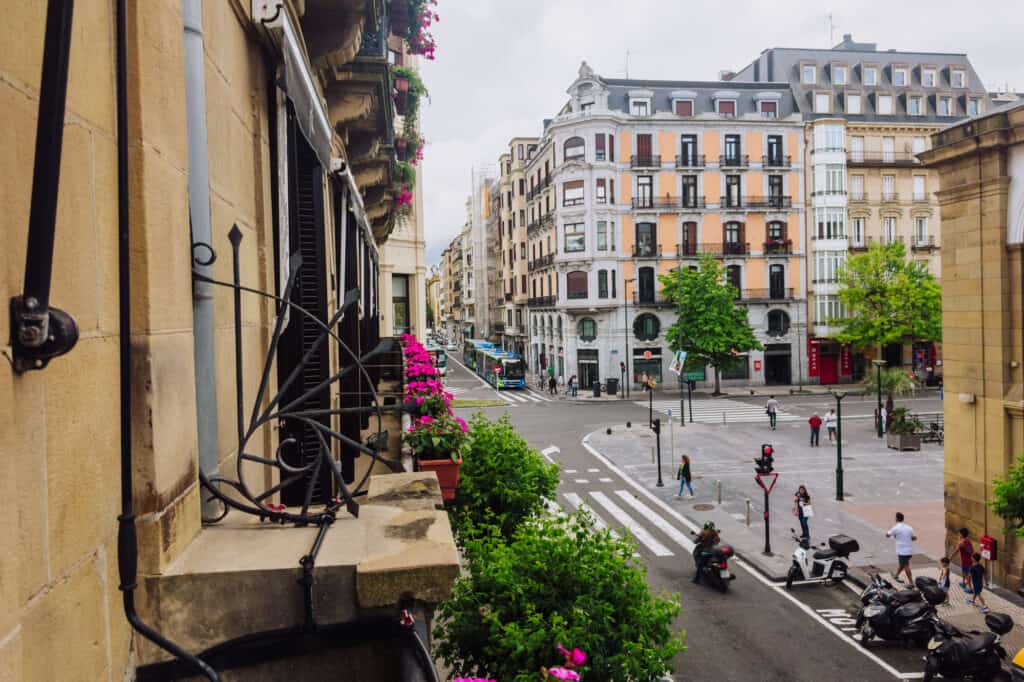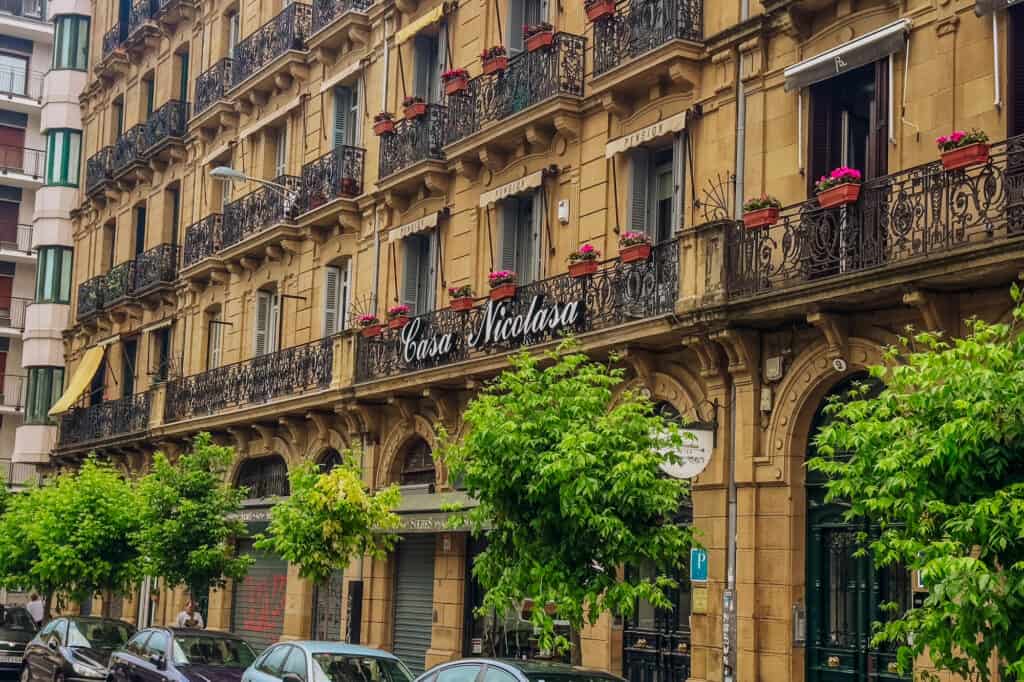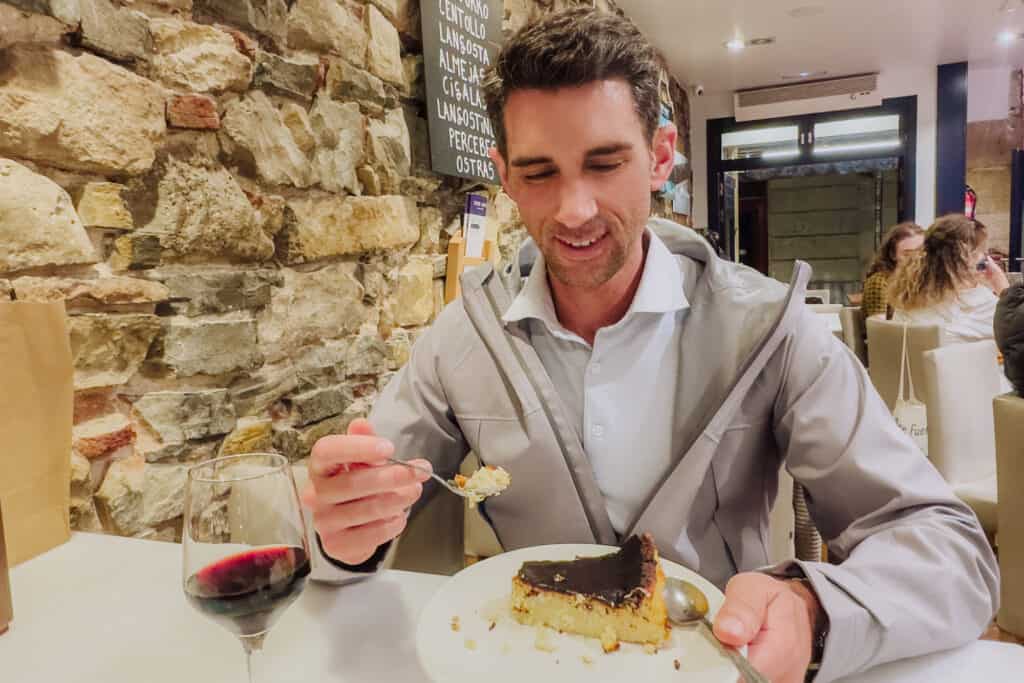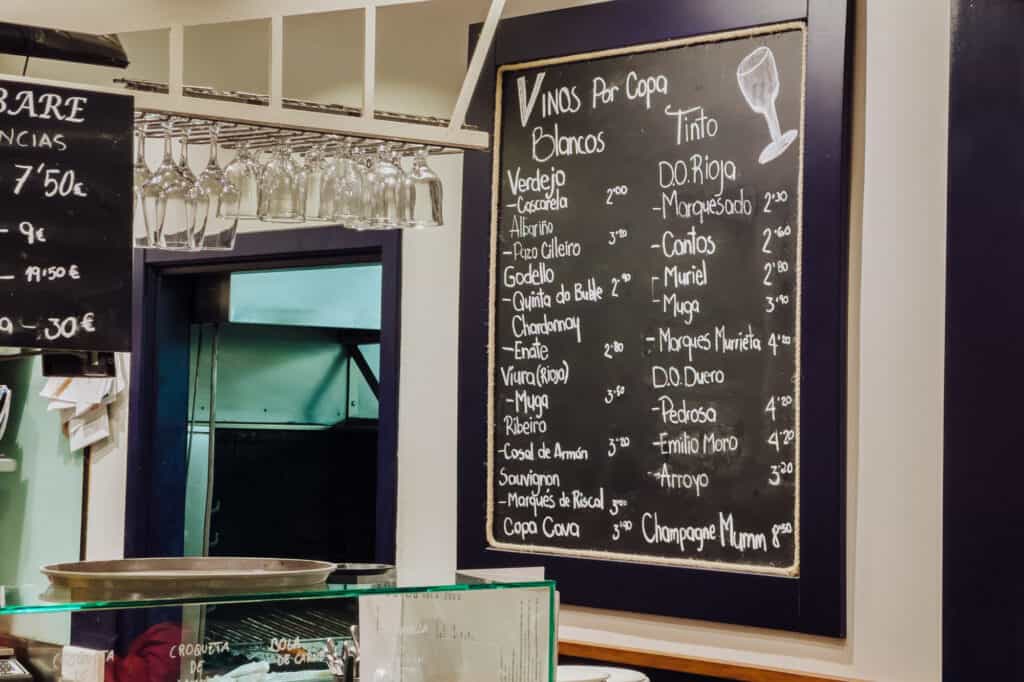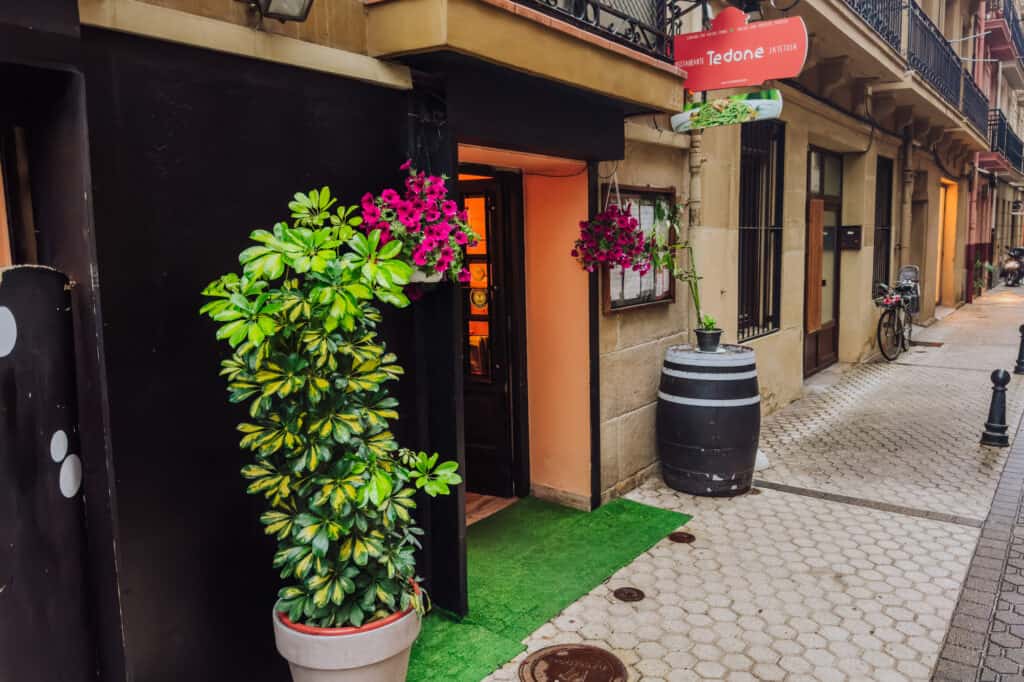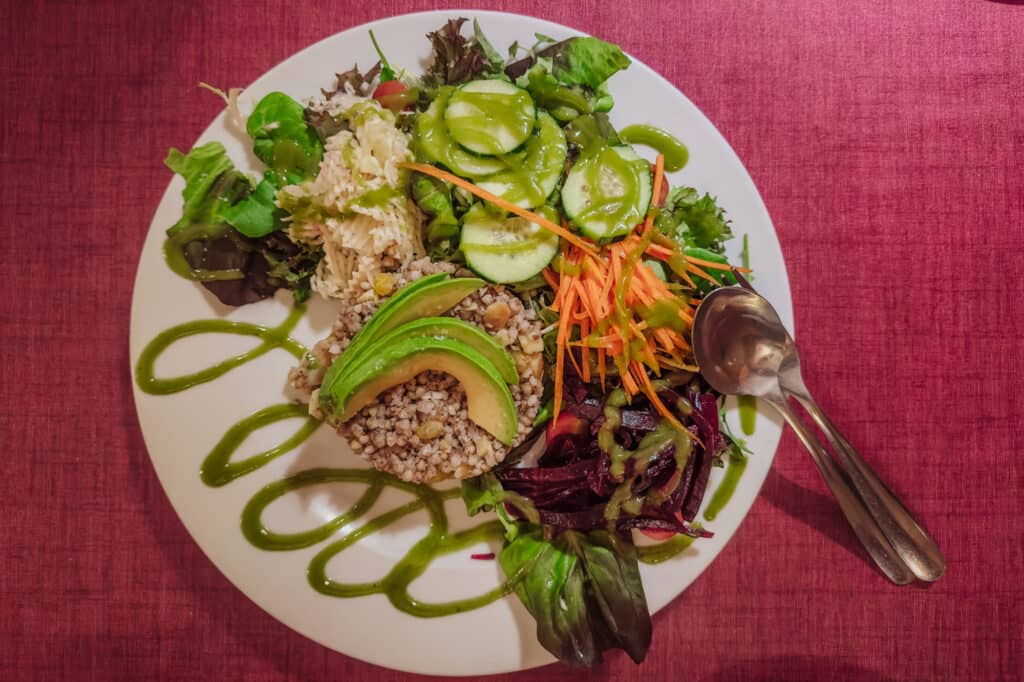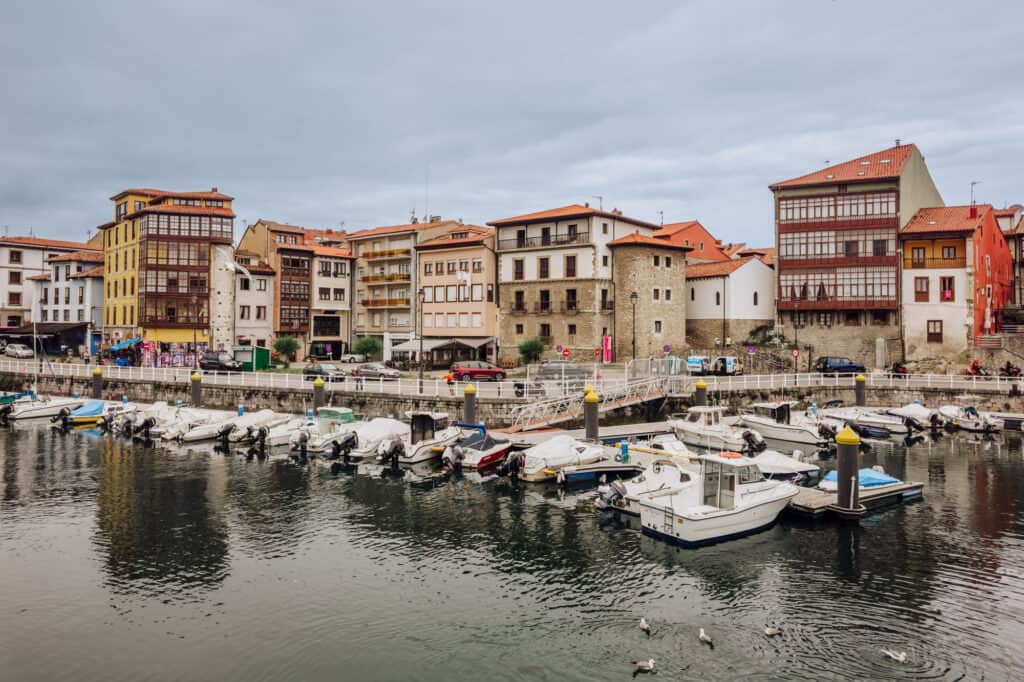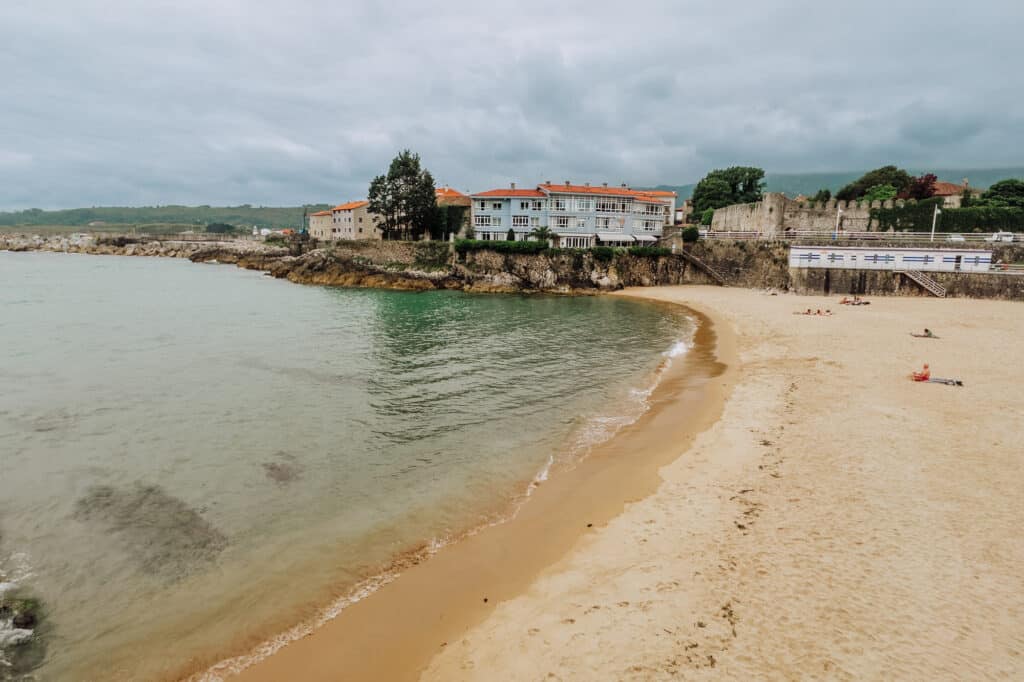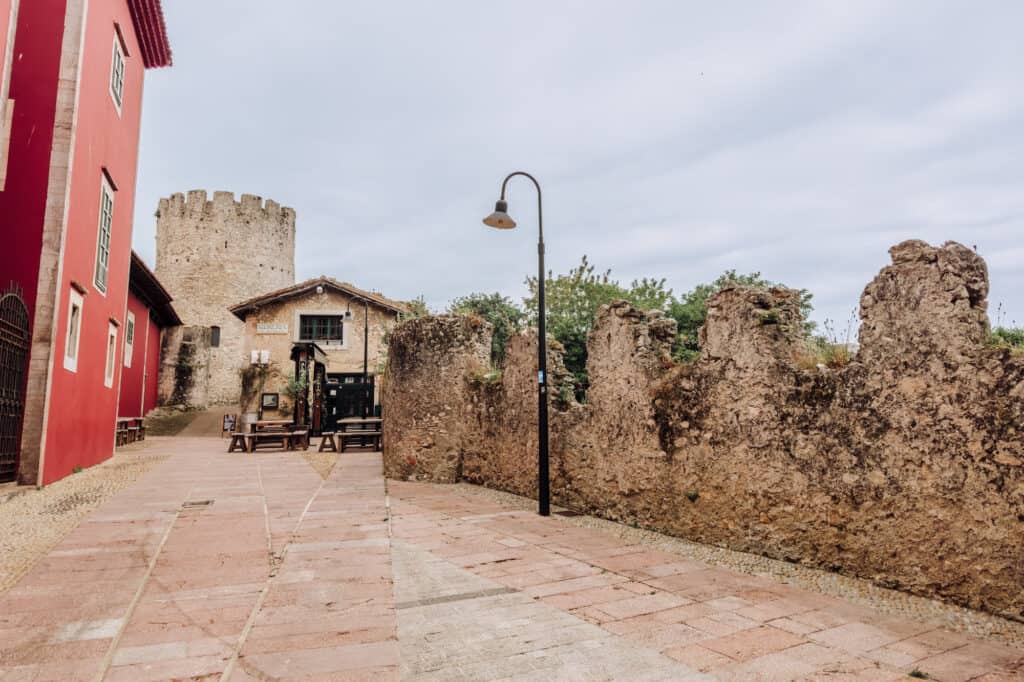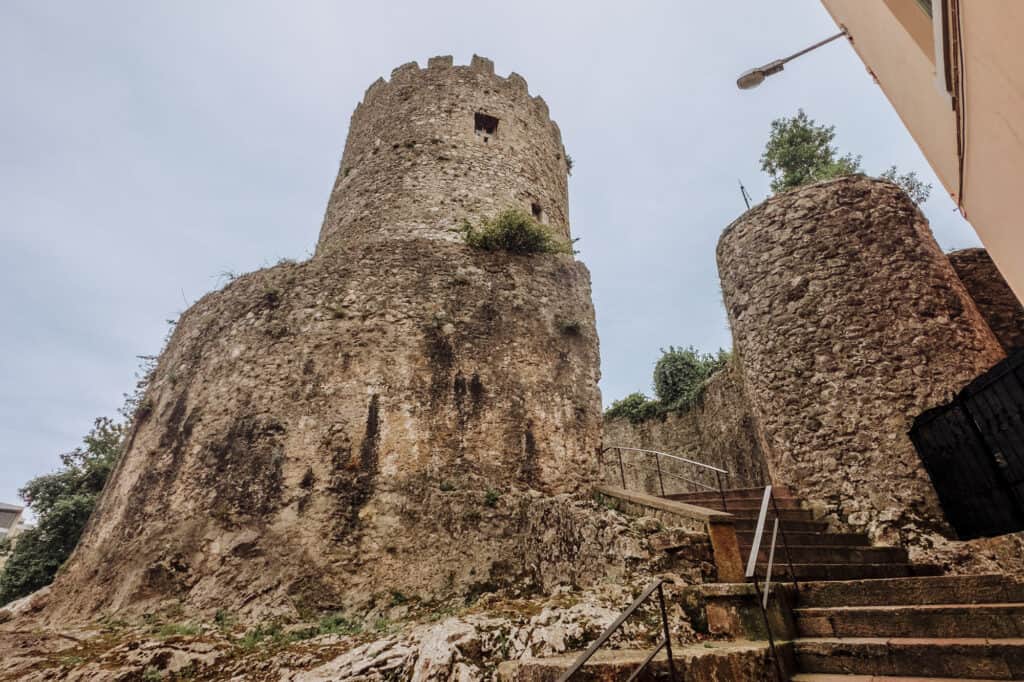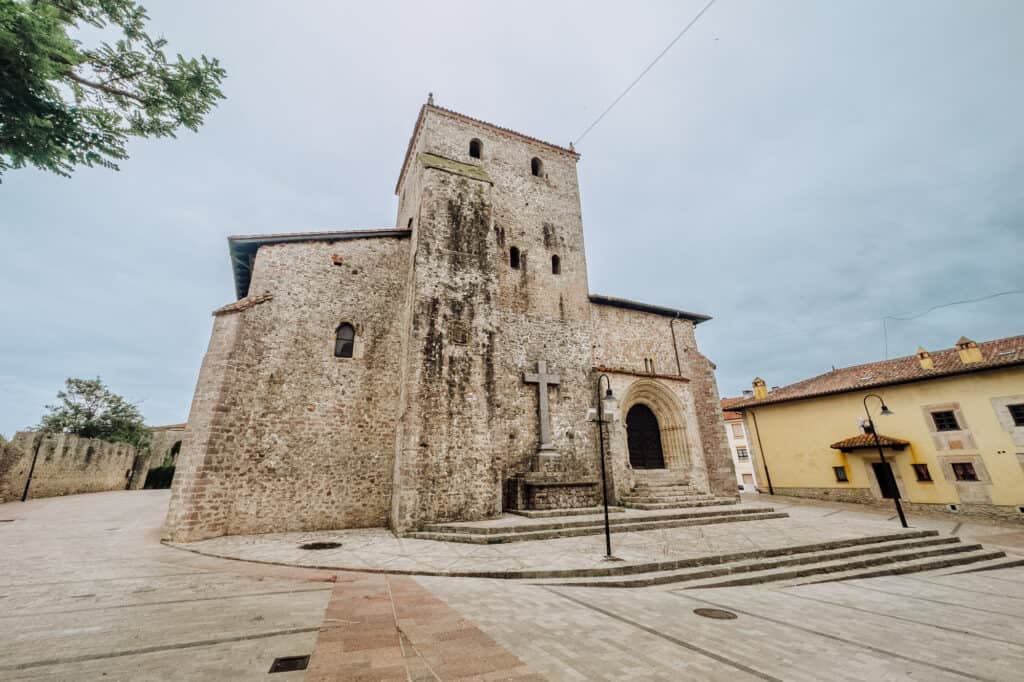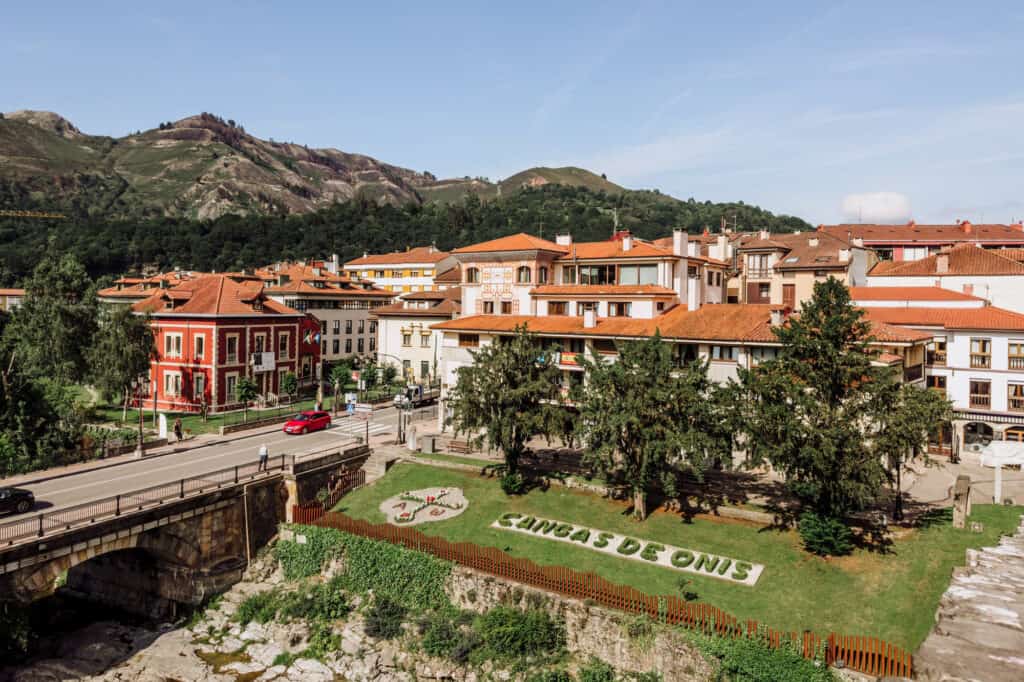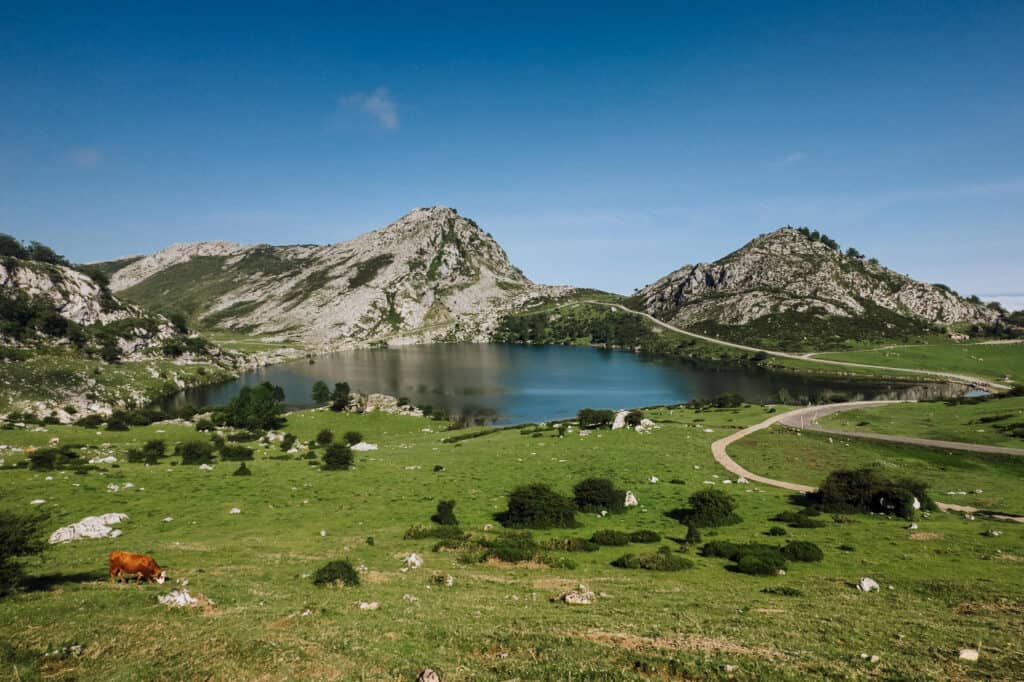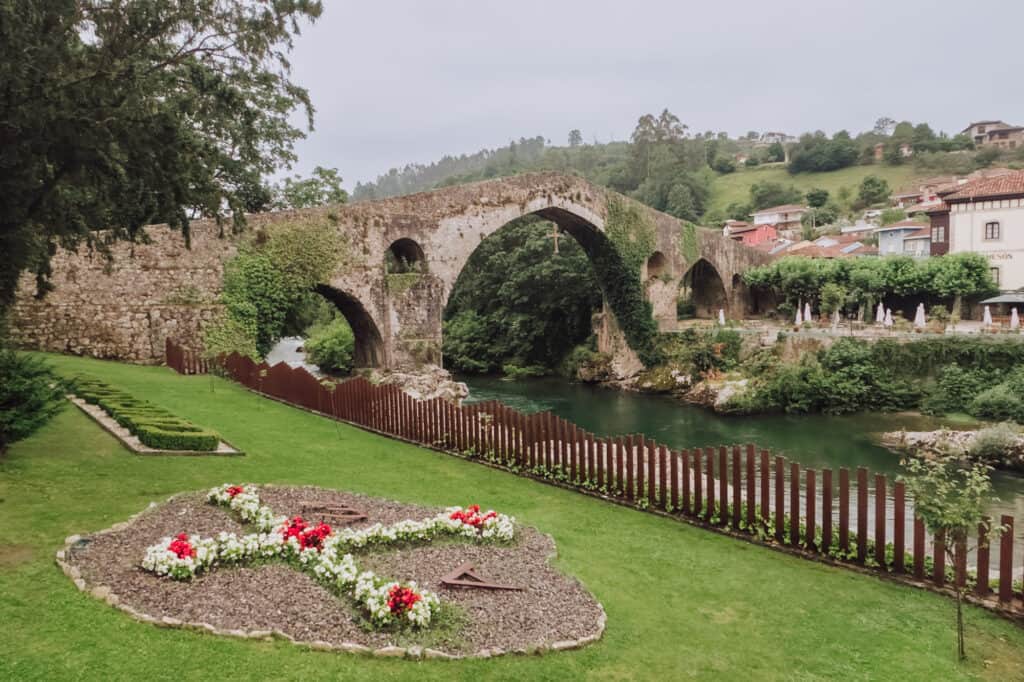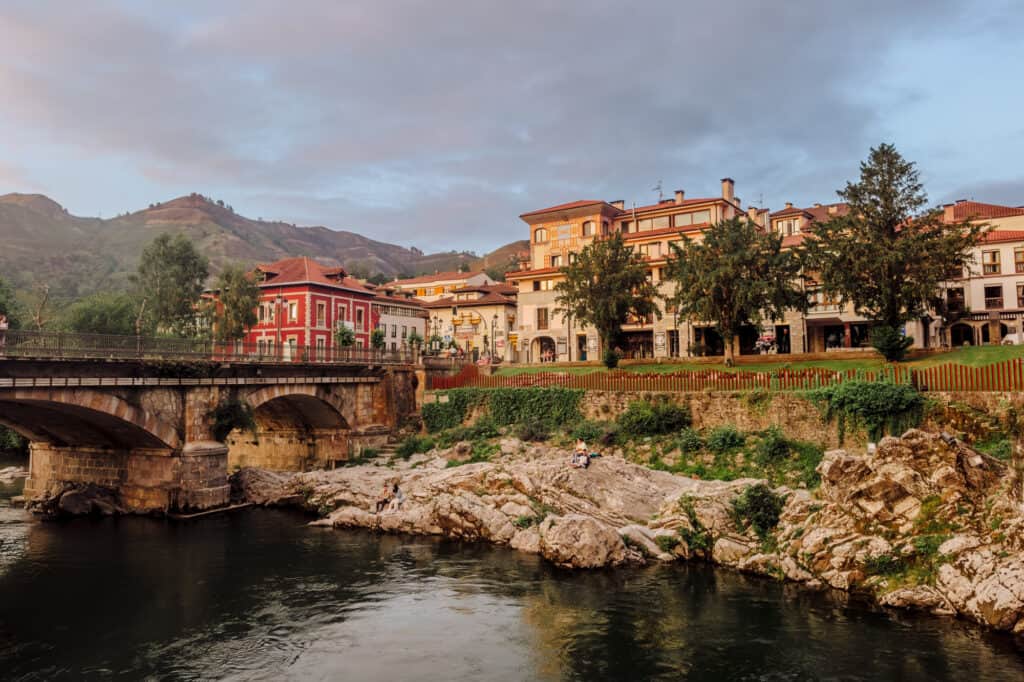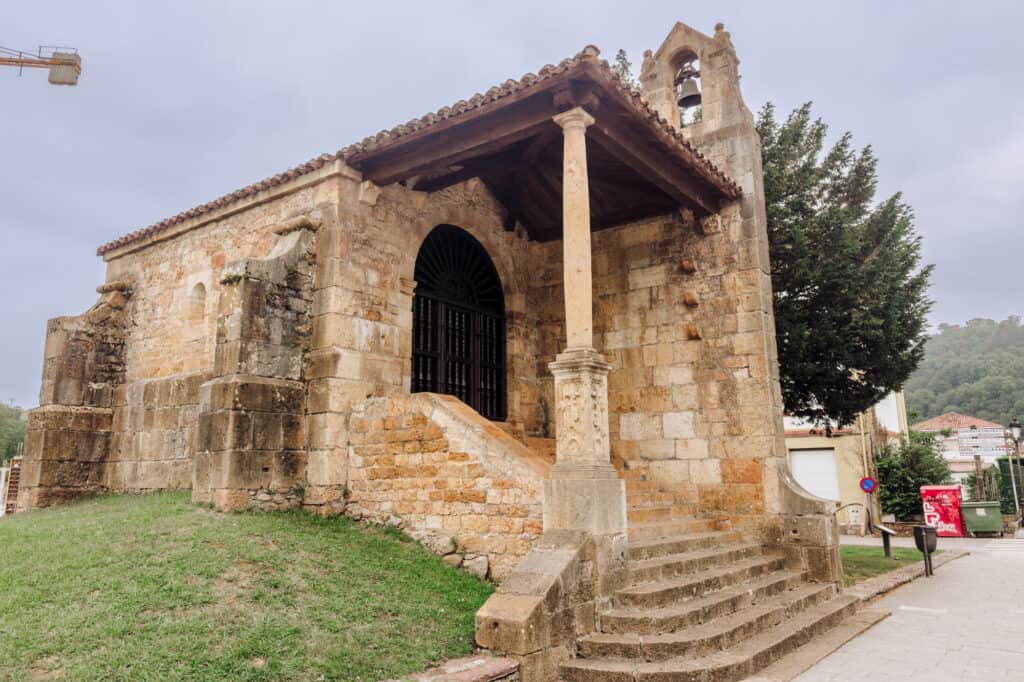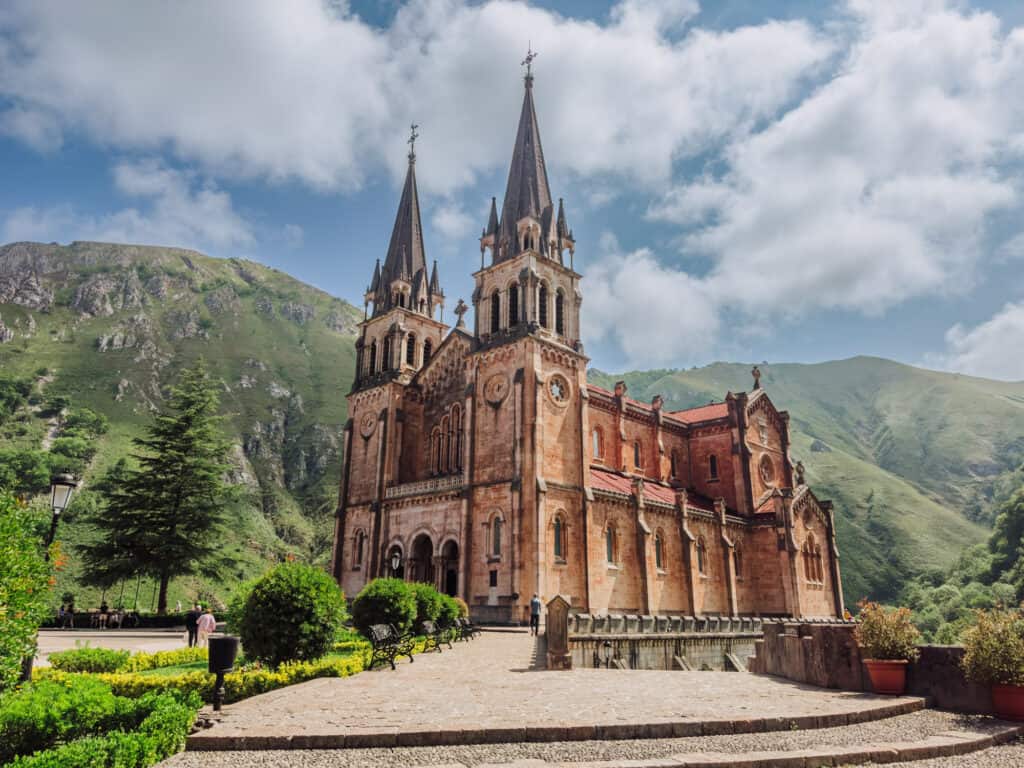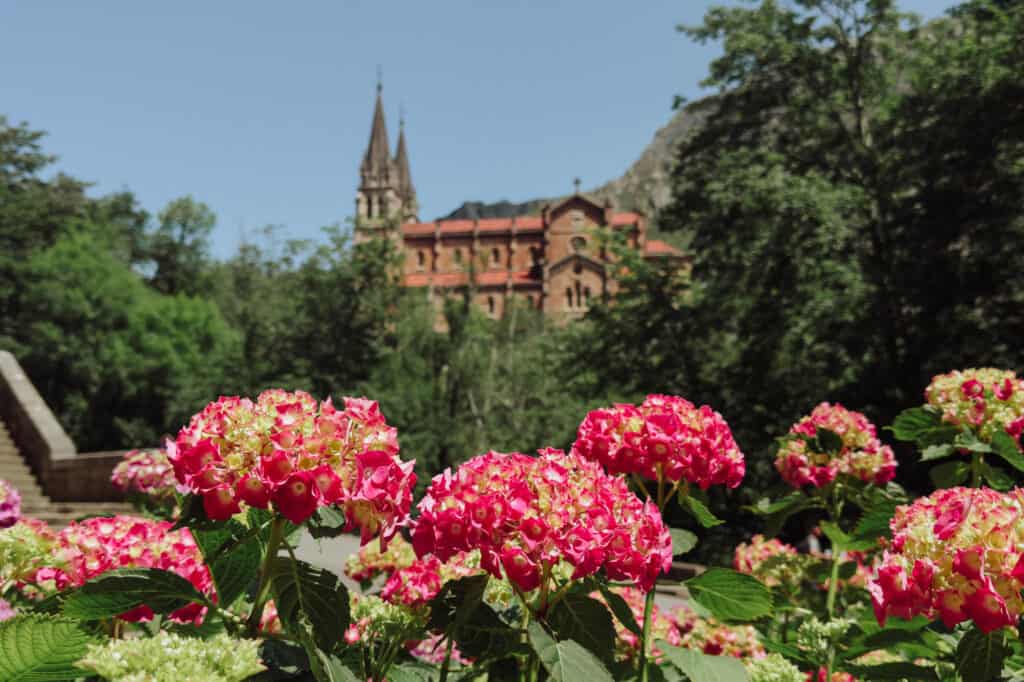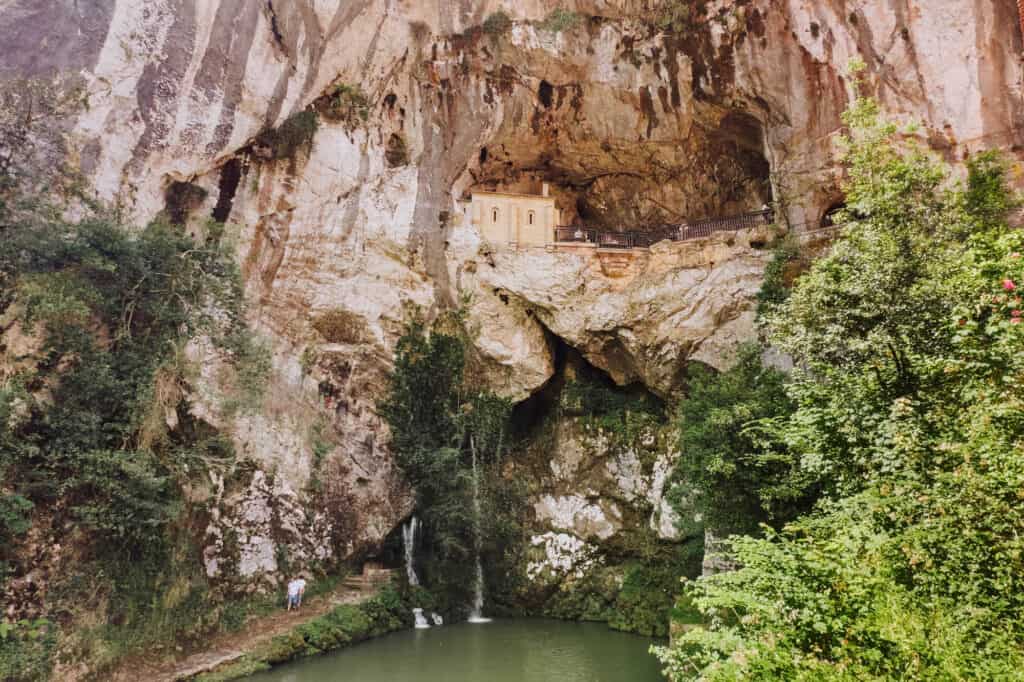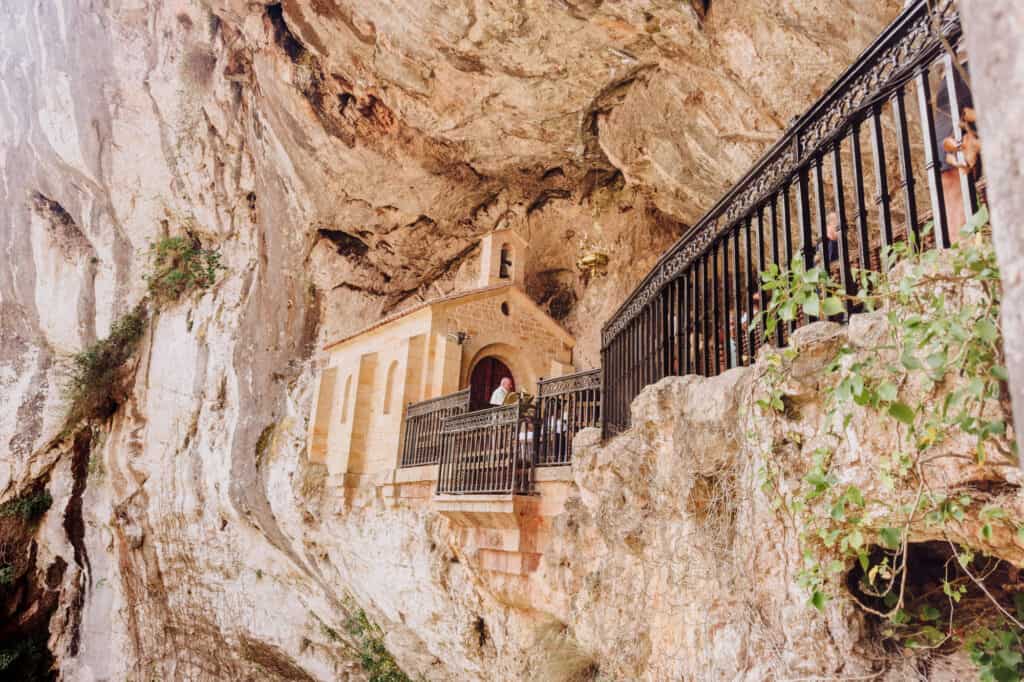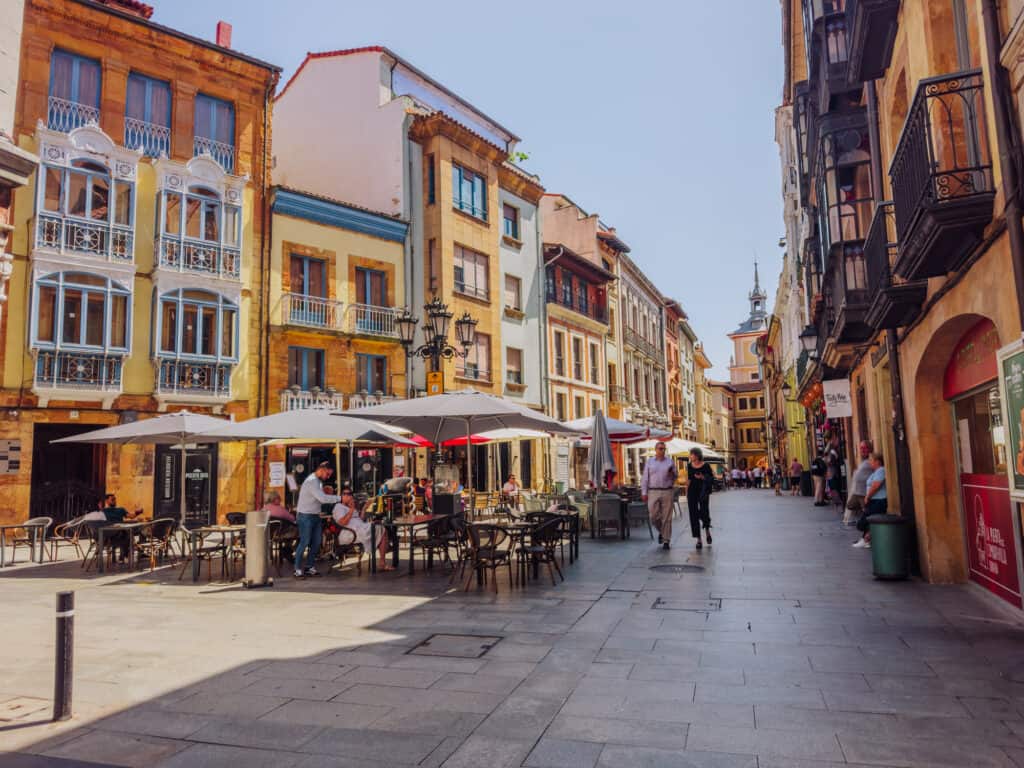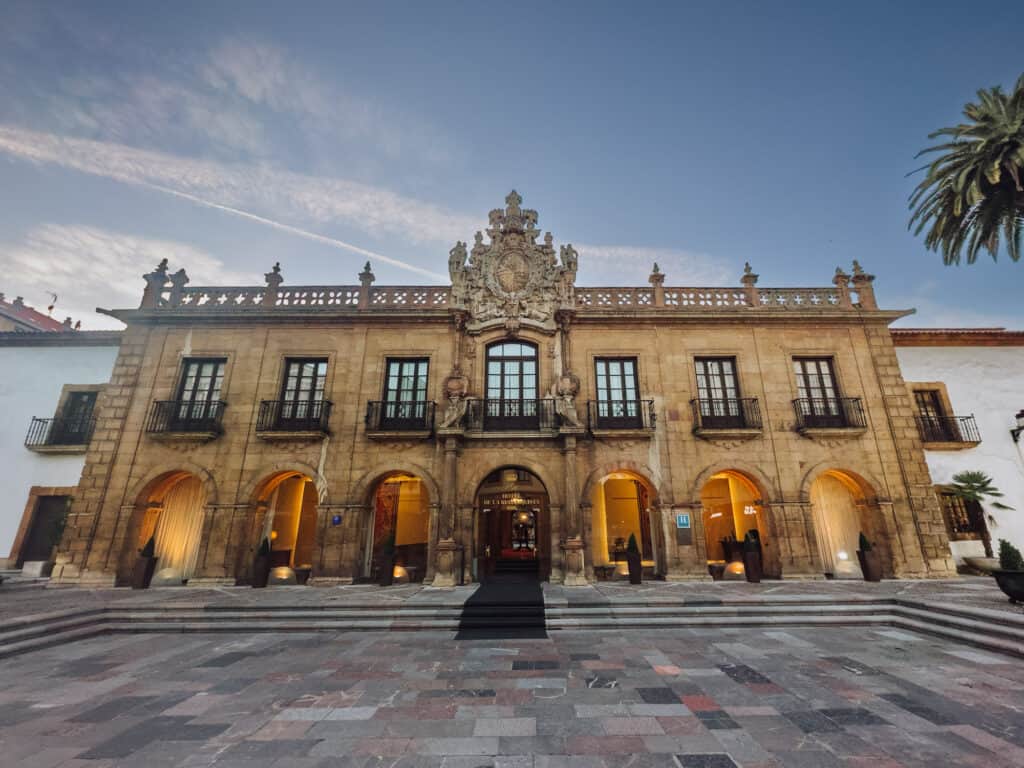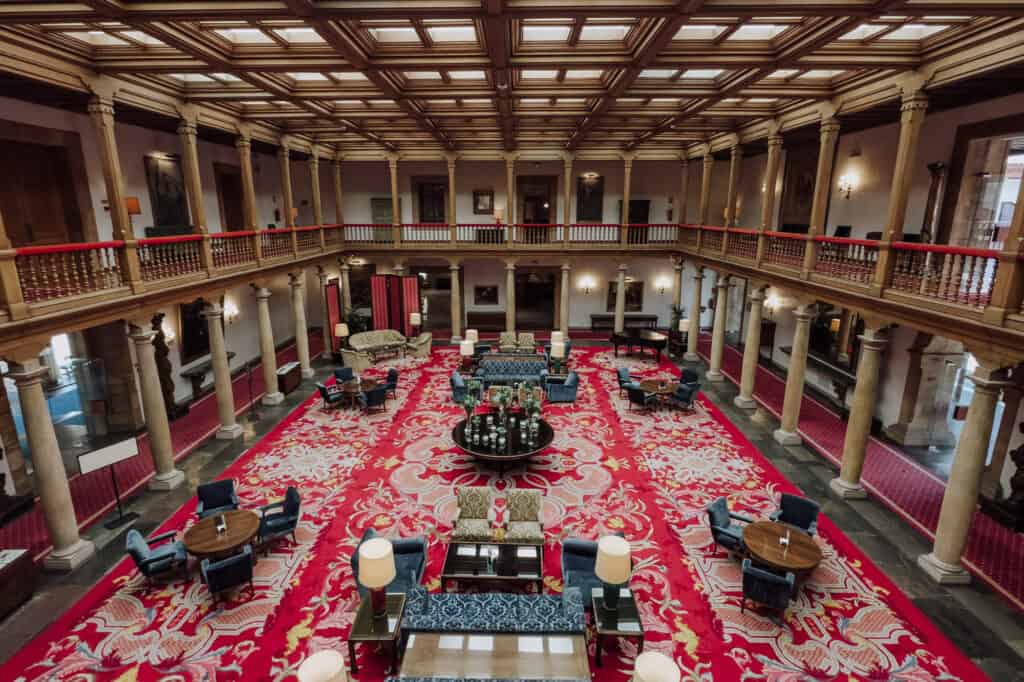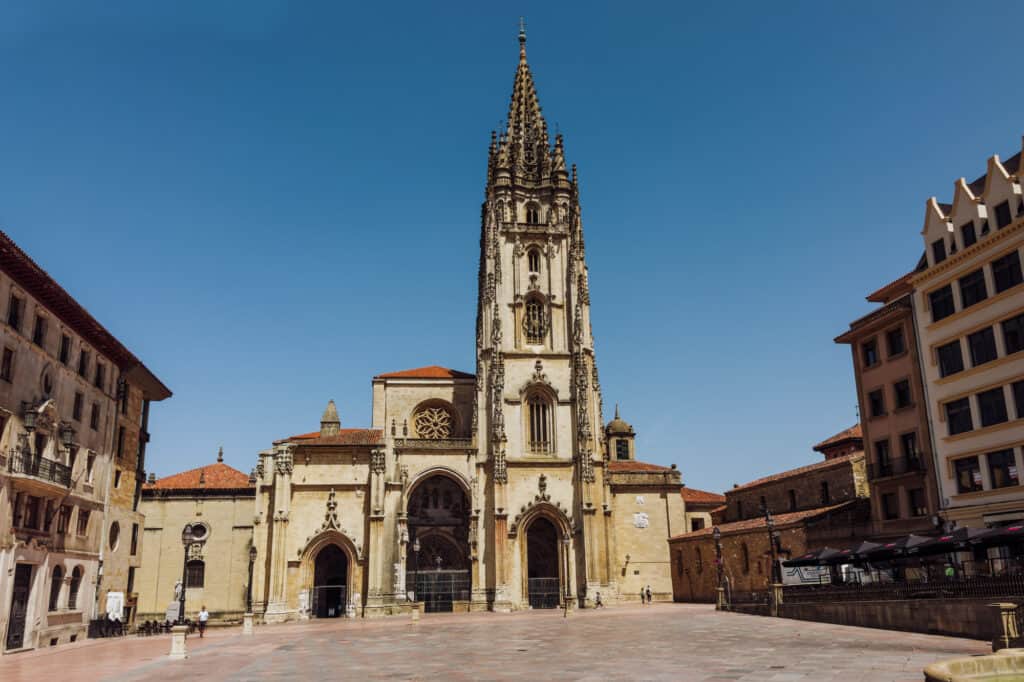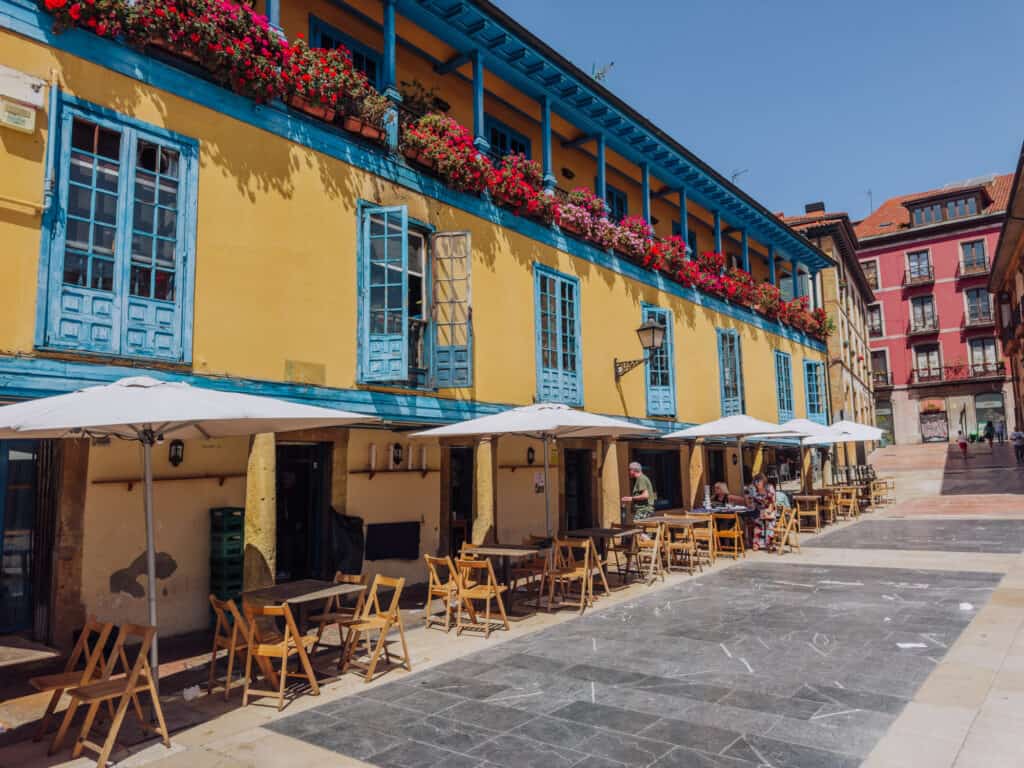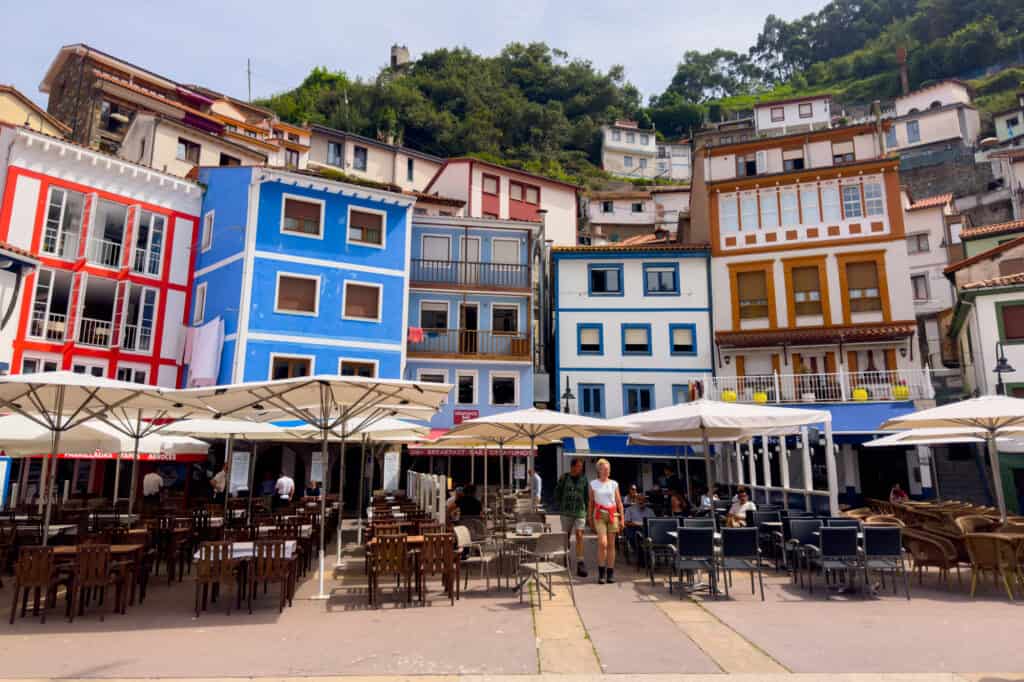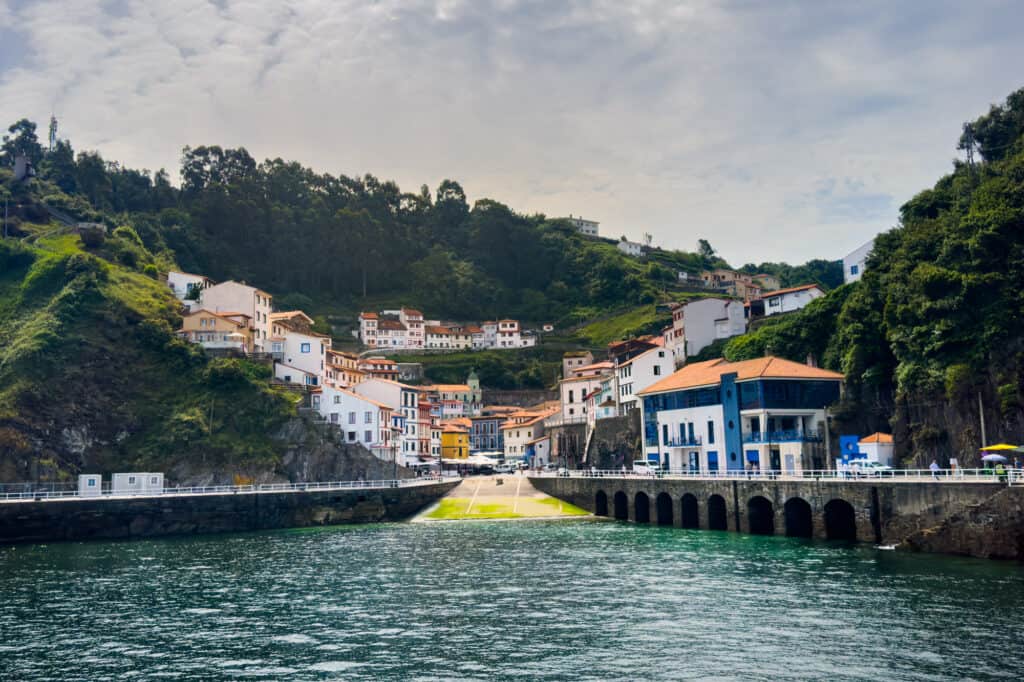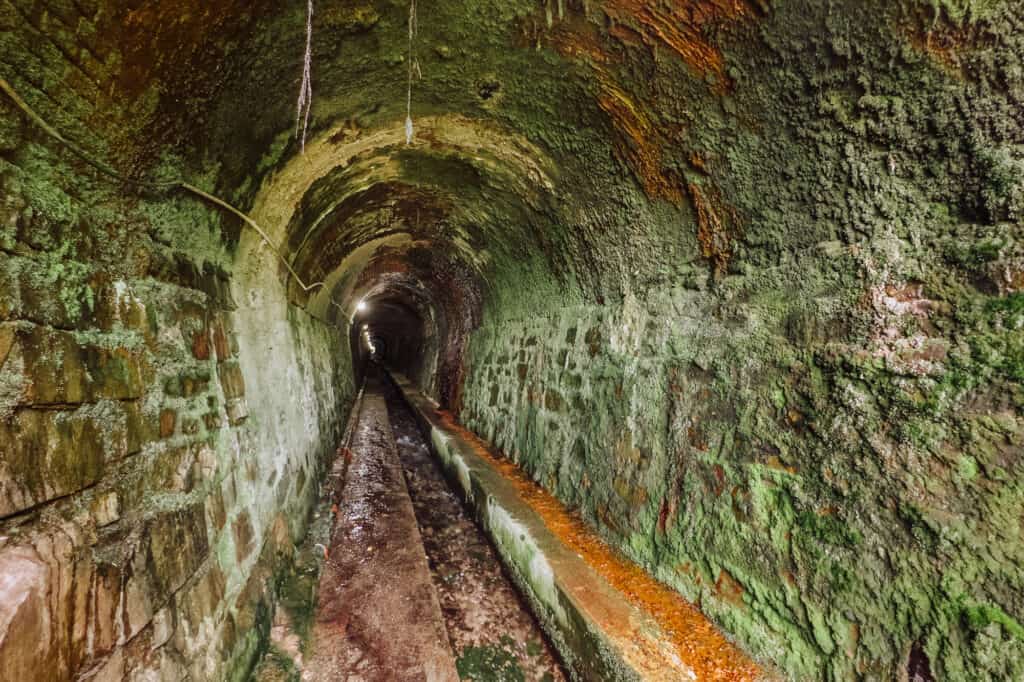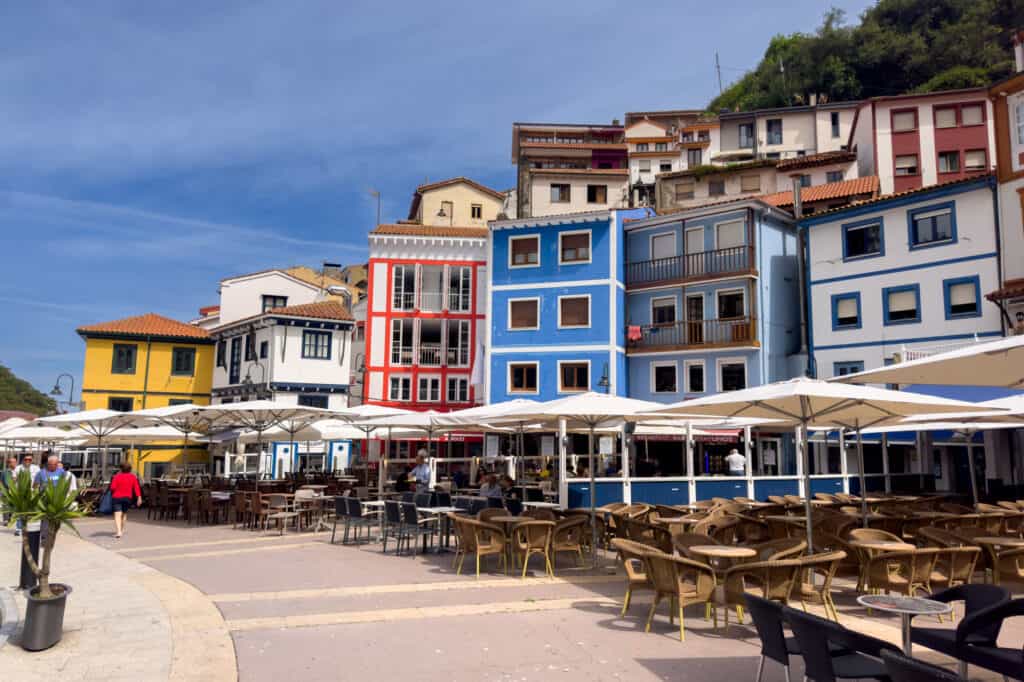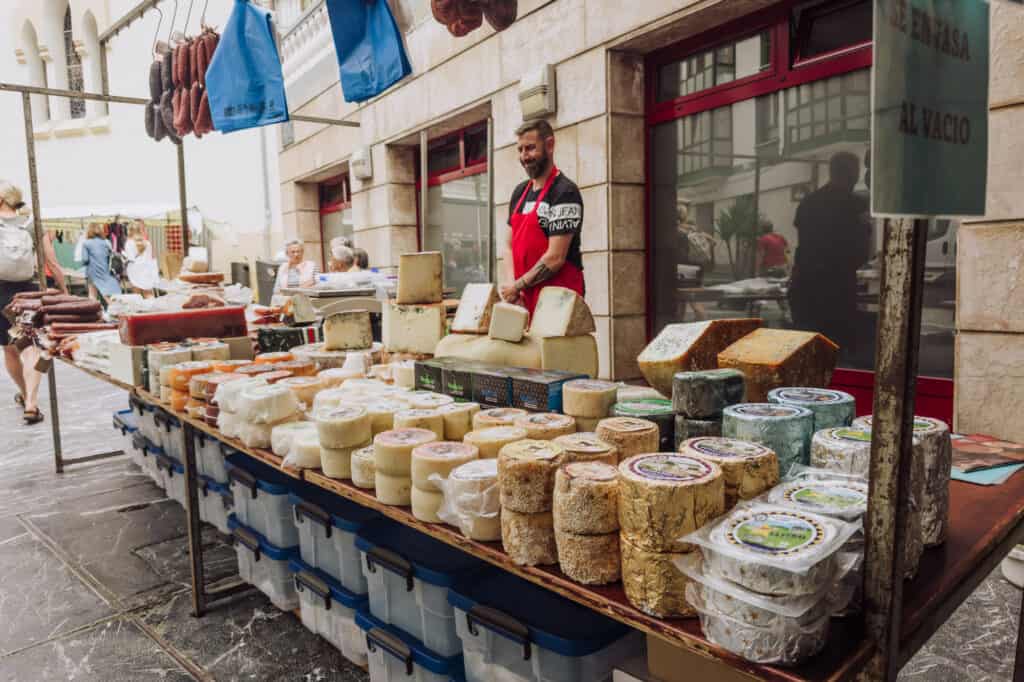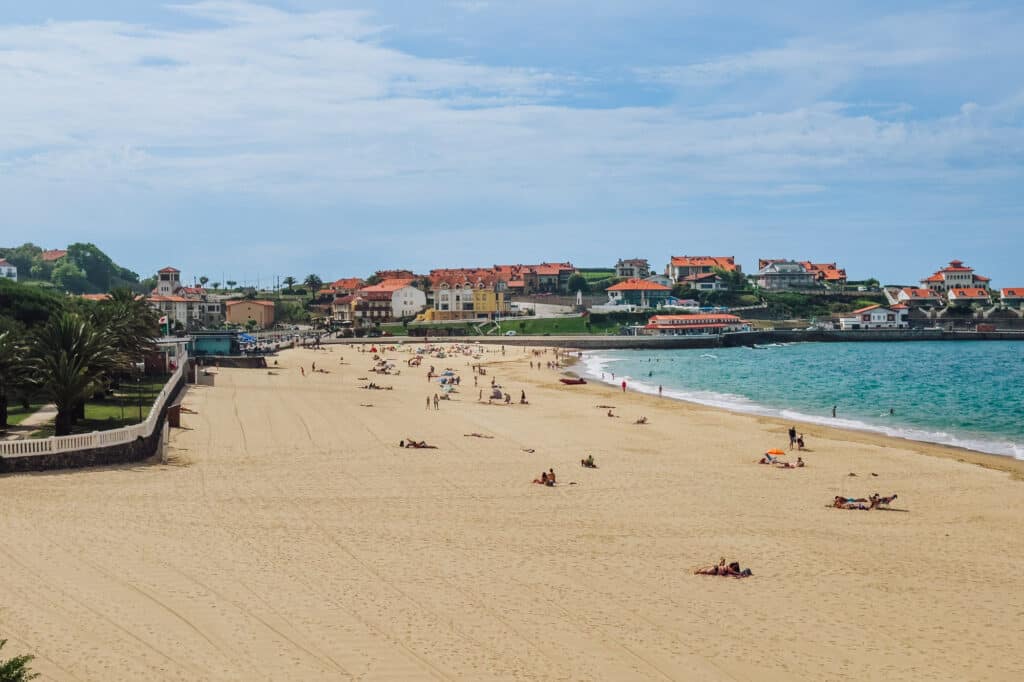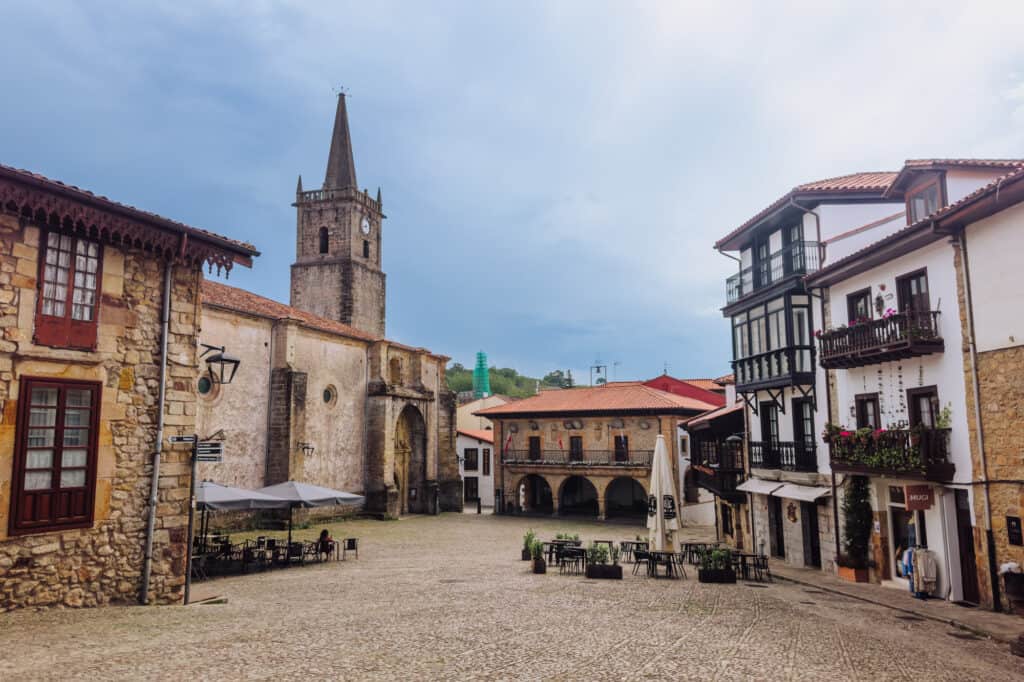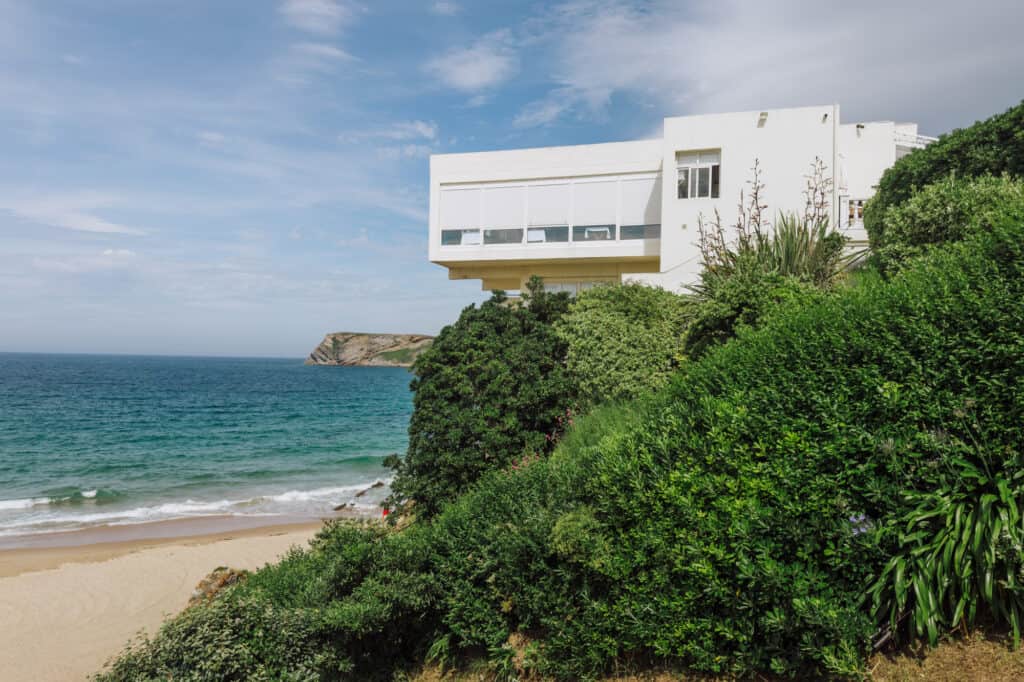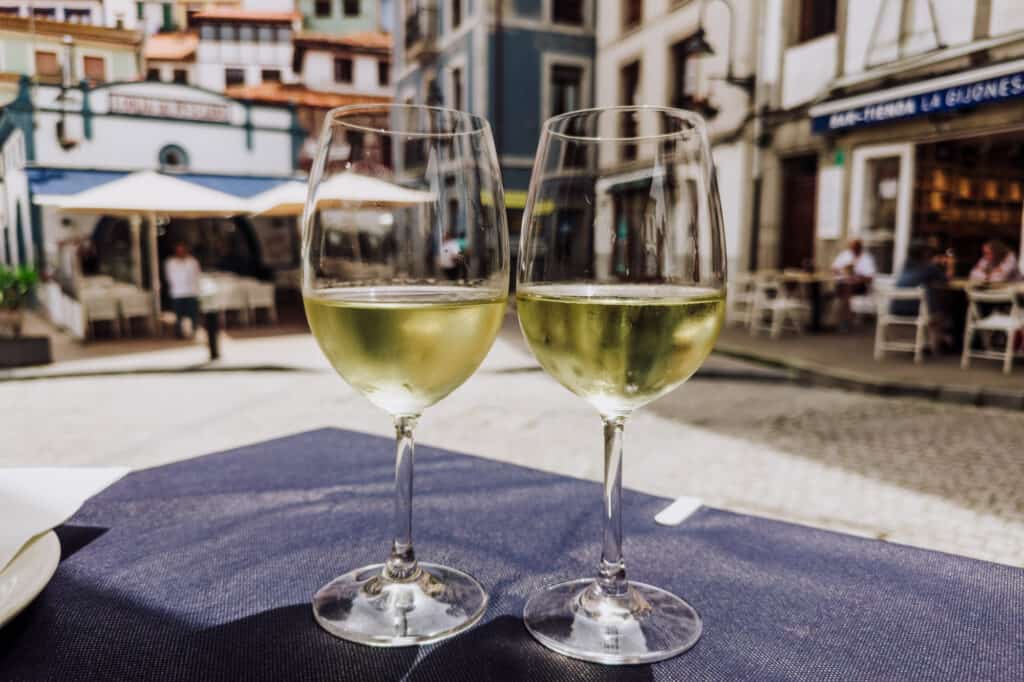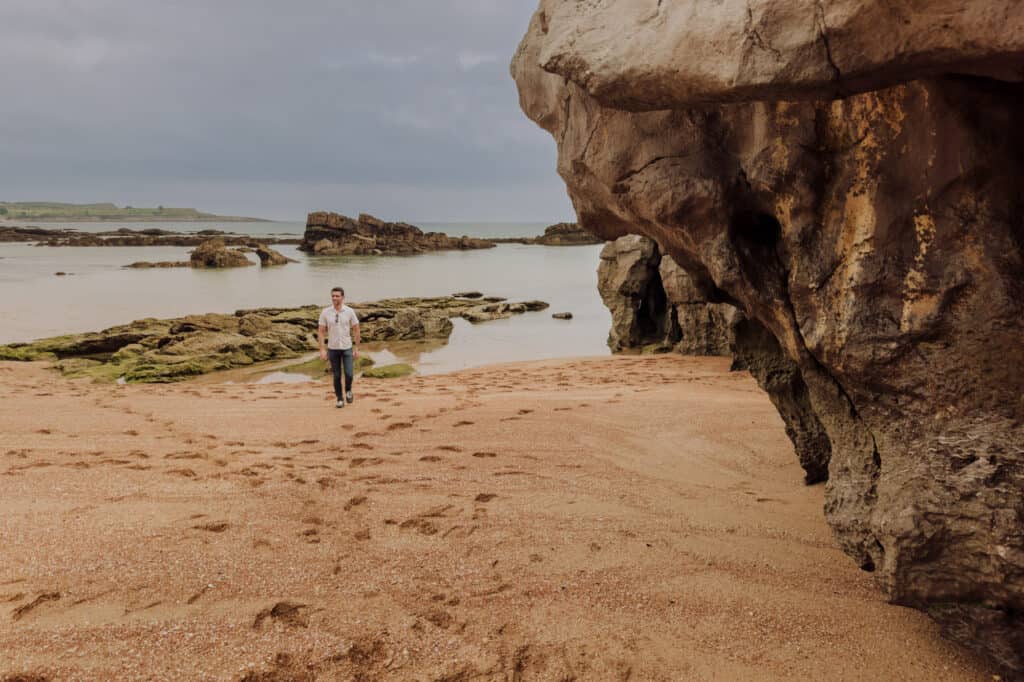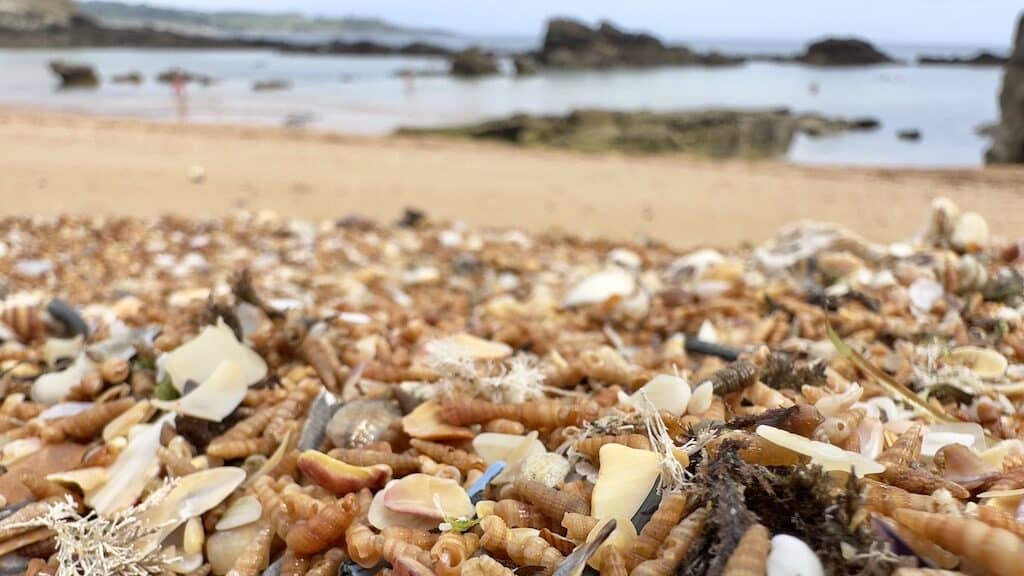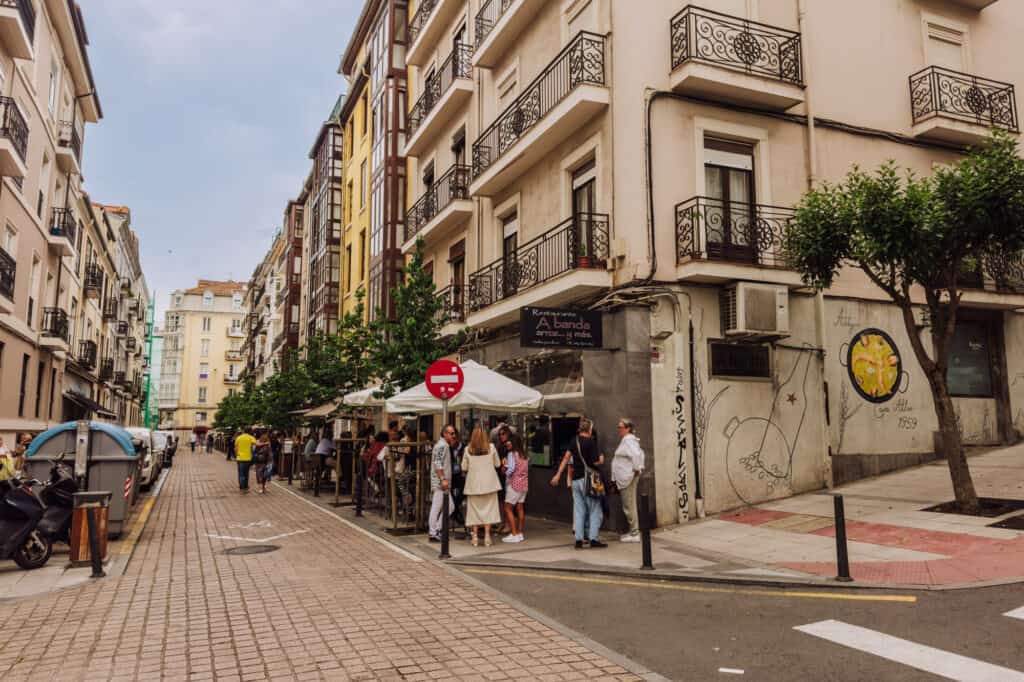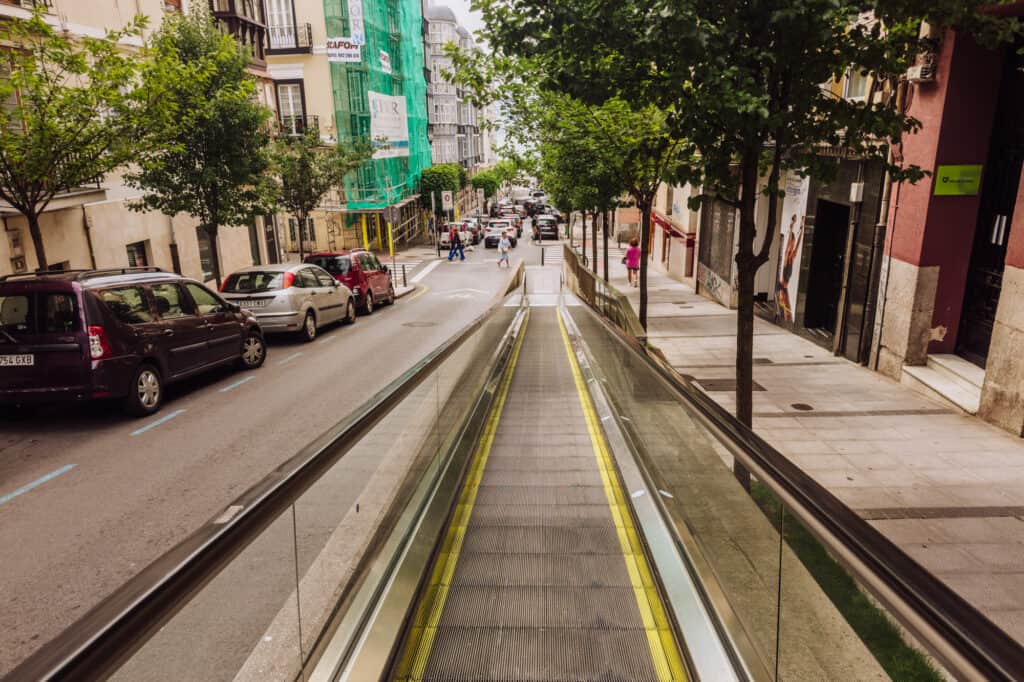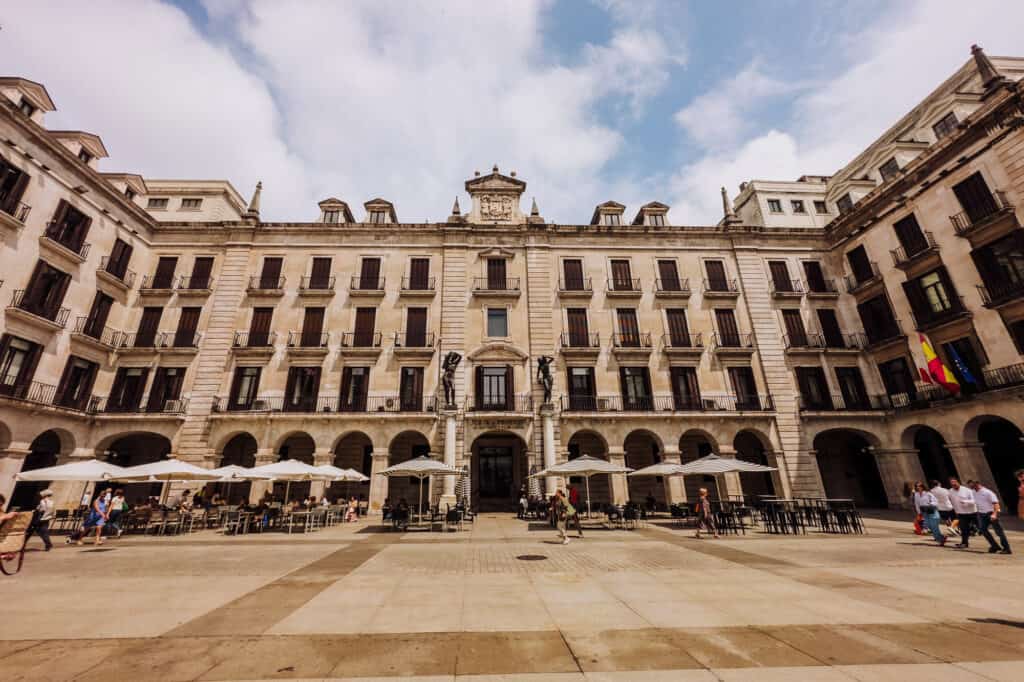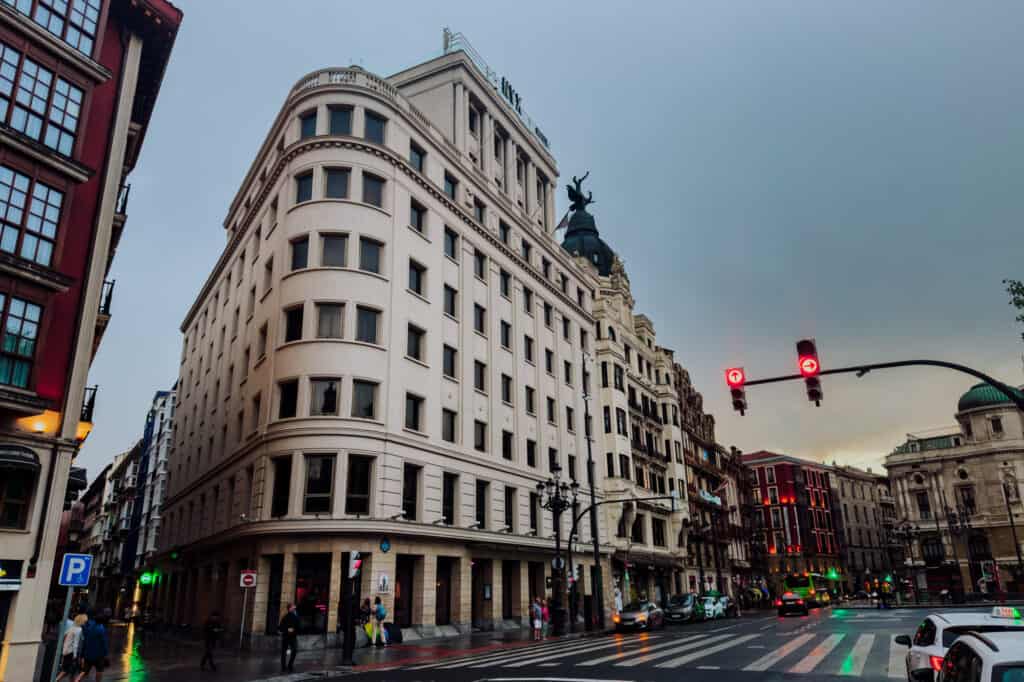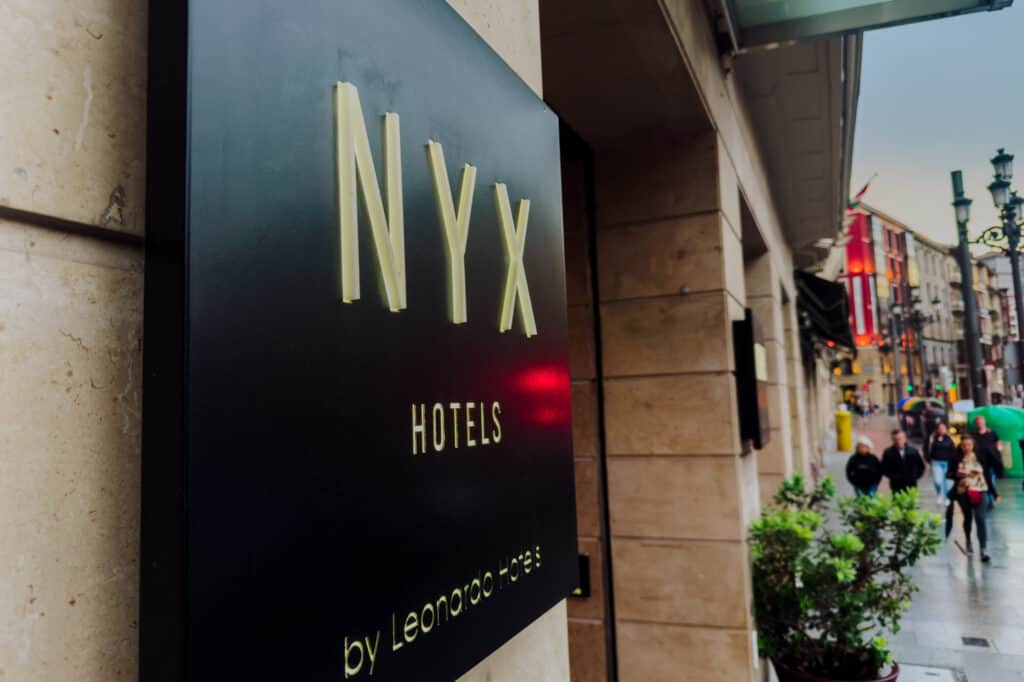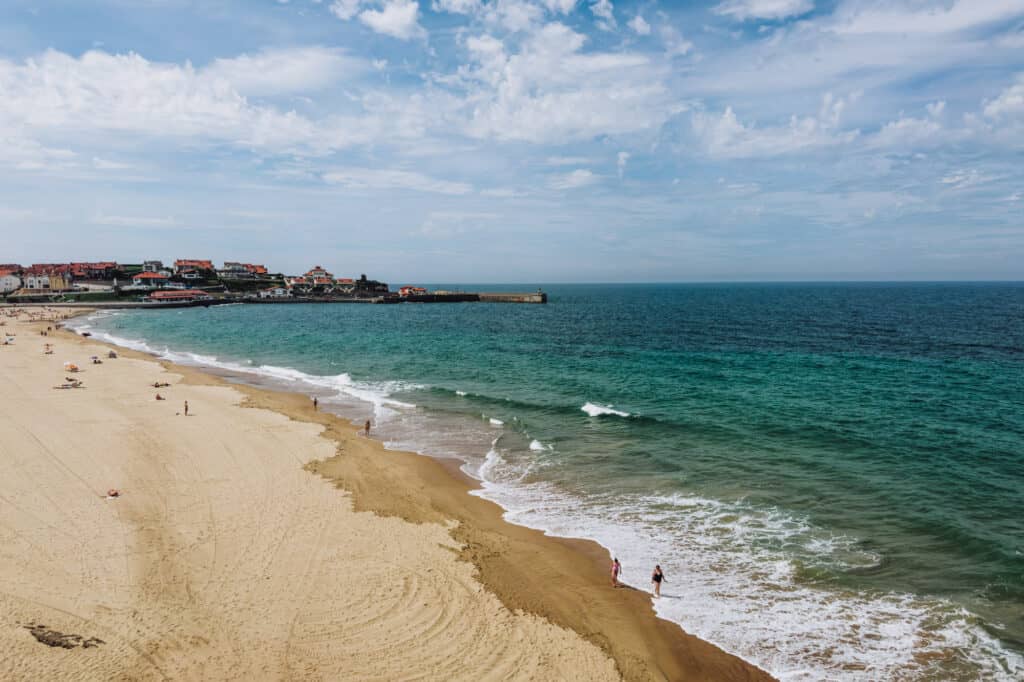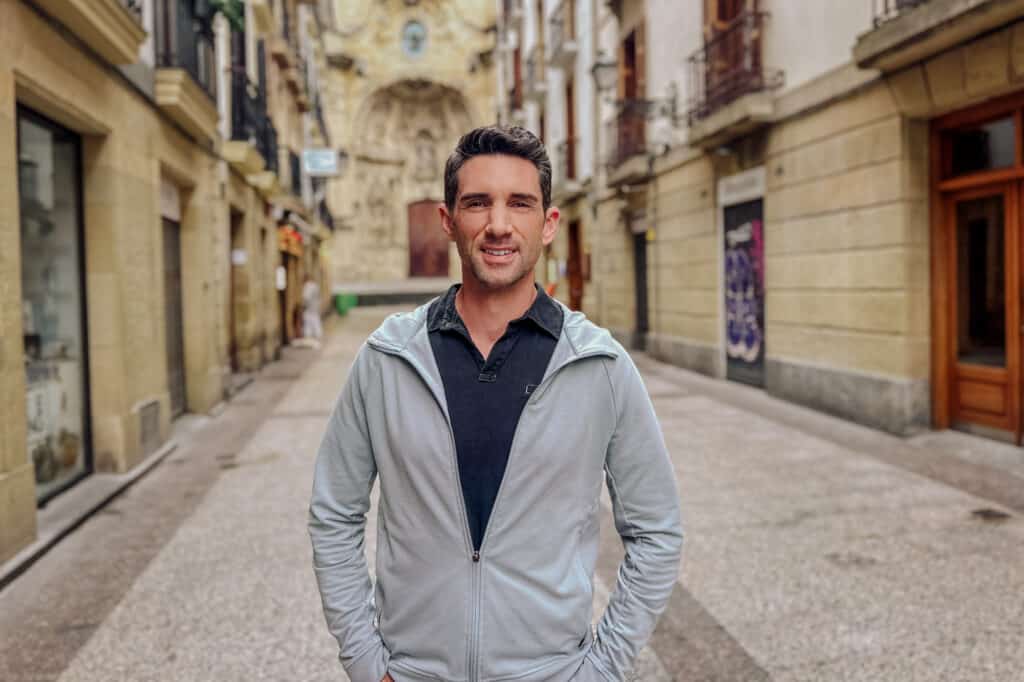11 ‘Must See’ Cities in Northern Spain: A Guide & Itinerary
A ROAD TRIP ITINERARY FOR THE BEST CITIES IN NORTHERN SPAIN
For this itinerary, we’ll fly into Bilbao, rent a car, and then make a loop over the course of several days. The cities in this Northern Spain itinerary will include several large ones which may be familiar to Americans, along with smaller, picturesque villages and beach towns along the way.
Based on geography and the highway system through Northern Spain, it’s not a perfect circle loop. We’ll backtrack a bit in spots, but it’ll all make sense and be worth it!
Our “Cities of Northern Spain Itinerary” will take us through several regions in the country, from the Basque Country, through Cantabria, and Asturias.
You can make this road trip through these cities in Northern Spain over the course of four days … or… two weeks! It all depends on how much time you want to spend in each!
Renting a Car in Northern Spain
The best way to visit the small towns and big cities in Nothern Spain is by renting a car. Rates fluctuate, but it was only $100 for our first 6-day rental.
I’ve had great luck using Discover Cars for rentals in Europe. Their listings include locally-based car rental companies (like Centauro in Spain) in addition to Hertz and the other agencies we’re used to in the USA.
How to Get to Cities in Northern Spain
In my opinion, the best way to begin a road trip of cities in Northern Spain begins by flying into a smaller city (like Bilbao) and renting a car from there. This way, you avoid the hassle of trying to figure out how to navigate your rental car out of a huge city like Madrid!
Bilbao may be a smaller city with a small airport, but it’s worth searching as a flight destination when you start your planning. The convenience factor is high!
On the other hand, Madrid is probably the most economical option for a flight from the United States. It’s a hub for Delta Airlines, so many times you’ll find great deals from US cities to Madrid, and be able to begin your journey from there.
PRO TIP: To save a couple hundred dollars per flight (during certain times of the year) book midweek flights! Flights on Tuesdays, Wednesdays and Thursdays are often less expensive than flights on Fridays, Saturdays, and Sundays.
From Madrid, it’s a four-hour drive north (if you rent a car) to the cities in Northern Spain. Alternatively, you can take a train from Madrid to Oviedo, and begin your road trip from there.
Map of Our Road Trip Through Cities in Northern Spain
We’ll start in Bilbao and first head east to San Sebastián. Days later, we’ll loop back west through Bilbao to hit Cangas de Onis, Santander and several other cities in Northern Spain.
1. First Stop: Bilbao
I’m starting our “Cities of Northern Spain Itinerary” in Bilbao simply for logistics. I’d suggest flying into Bilbao and spending the night there to get your bearings and adjust to the time difference, before beginning your road trip to other cities in Northern Spain.
➡️ HOTEL SUGGESTION: NYX Hotel Bilbao
Bilbao is the largest city in the Basque Country (part of Northern Spain) and has a metropolitan population of over 1 million people.
While historically Bilbao is known for its industry, manufacturing, and shipbuilding, it’s become a hub for urban renewal and culture. The construction of the Guggenheim Museum Bilbao played a crucial role in revitalizing the city and attracting visitors from around the world.
Things to Do in Bilbao
The Guggenheim is one of many art galleries, museums, and theaters in Bilbao.
Jeff Koons’ flowery art installation outside the Guggenheim, called “The Puppy,” is reason alone to stop by, even if you’re not an art fan!
We stopped by after sunset, to get photos without the crowd!
Bilbao is also home to big brand-name shopping boulevards, as well as a beautiful and historic “old town.” The stone streets in the Casco Viejo neighborhood are pedestrian-friendly, and lined with shops and restaurants.
You’ll find historic gems as you wander around, like the old drinking water fountain, Txakurraren Iturria. It translates to “Fountain of the Dog.” The fountain itself is functional and provides fresh drinking water for tourists, businesses and people living nearby.
Food in Bilbao
Bilbao is also known for its gastronomy, offering a wide array of Basque cuisine, including pintxos (Basque tapas). The streets of Casco Viejo are lined with bars and restaurants, featuring a wide array of pintxos to choose from.
For a quieter spot at night, the cafe in the park west of the Guggenheim Museum (Cafe Ona) has a great patio with a pretty view. Glasses of wine are only about $3 USD, and it’s open past 10:00pm in the summer!
2. Bilbao to Gaztelugatxe
- Distance: 30 kilometers
- Drive Time: 40 minutes
Gaztelugatxe is a small, rocky island located on the coast of the Basque Country in Northern Spain. It’s known for its iconic chapel, which sits atop the island and offers breathtaking views of the surrounding landscape and the Bay of Biscay.
Gaztelugatxe’s popularity and notoriety soared a few years ago, after it was used as a filming location in “Game of Thrones.” The steps led to Dragonstone, the fictional ancestral home of the House Targaryen on the show. The actual castle you see in the show is all CGI, but the steps and rocks are real!
Visitors can walk the 241 steps across the rocks to the San Juan de Gaztelugatxe Chapel. This small, medieval chapel dates back to the 10th century and is dedicated to Saint John the Baptist.
PRO TIP: Book in advance! A lot of people show up at Gaztelugatxe, expecting to just walk the steps to the chapel, but they have a timed entry system. Certain time-slots can sell out.
Parking in Gaztelugatxe
There are a few free parking lots around the entrance to Gaztelugatxe. You’ll find plenty of space, especially if you arrive somewhat early in the day.
Parking here is free, whether you pay to walk the steps out to chapel, or just want to wander through the coastal trails.
Things to Do in Gaztelugatxe
In addition to walking out to the chapel along the famous steps, the cliffs along the coast at Gaztelugatxe are stunning and worth exploring!
Plus the Bay of Biscay’s clear blue water adds to the stunning views. I was truly surprised by how beautiful the water is here.
In addition to walking out to the chapel, you can also explore the trails through the forest above the coastline. If you’re up for more of a hike, it’s a 2-kilometer walk from Gaztelugatxe to Bakio Beach through the forest.
Food in Gaztelugatxe
Gaztelugatxe isn’t a big (or even small) town, so food options are limited. You’ll find a couple cafes and restaurants right near the entrance to relax in, and grab a drink or meal. They have great views of the coast!
3. Gaztelugatxe to Bermeo
- Distance: 12 kilometers
- Drive Time: 25 minutes
Bermeo is a picturesque coastal town also in the Basque Country of Northern Spain.
Bermeo has a long history as a fishing village, and its port has remained largely unchanged since the 1800s.
The tall, narrow houses along the water still stand as they were originally built, tucked into the rocks. The facades are lined with balconies, and the windows you see on the front are the only windows in these long, narrow old homes.
You’ll also find narrow staircases zig-zagging between the homes along the port.
The ground floors, which used to be workshops and fish markets, are now mostly cafes and shops.
Parking in Bermeo
There’s a large free parking lot on the north side of Bermeo, which is a short walk away from the stone streets you’ll want to check out.
Things to Do in Bermeo
The town’s port remains one of the most important fishing ports in the region. It’s lined with cafes to choose from.
Bermeo’s Old Town is a charming neighborhood with narrow streets and traditional Basque architecture.
You might find a market open in the plaza outside the Santa Maria Iglesia (cathedral).
Food in Bermeo
Bermeo is renowned for its anchovies, which are caught in the Bay of Biscay and often served marinated in olive oil and vinegar. They’re also used in a variety of pintxos (Basque tapas).
Marmitako is a traditional Basque fisherman’s stew, which typically includes tuna, potatoes, onions, peppers, and tomatoes, cooked together.
4. Bermeo to San Sebastian
- Distance: 120 kilometers
- Drive Time: 90 minutes
San Sebastian, also known as Donostia in the Basque language, is one of the most beautiful coastal cities in Northern Spain.
It’s a favorite among travelers for its beaches, hiking trails, culture, and food!
I’d definitely recommend spending at least a night in San Sebastian on your road trip through cities in Northern Spain.
Parking in San Sebastian
You’ll have to drive through town to get to the Okendo lot. It’s an underground parking lot which charges by the hour, or about 28 Euros per day.
It’s within easy walking distance from San Sebastian’s “Old Town” and the water.
Things to Do in San Sebastian
San Sebastian’s “Old Town,” known as Parte Vieja, is home to many blocks full of shops and restaurants. It’s pedestrian-friendly with stone streets.
San Sebastian is famous for its picturesque beaches. The most popular beach is La Concha, a crescent-shaped sandy beach with crystal-clear waters. It’s considered one of the most beautiful urban beaches in Europe.
Boat crews offer ferry tours of the bay for 7 Euros from the port.
You can also rent bikes, scooters, kayaks, and more from businesses down by the water
Monte Urgull and Monte Igueldo are two hills that provide panoramic views of San Sebastian and its coastline. The walking paths wind up a mountain looking back at the city and out to Santa Klara Isand in the bay.
Where to Stay in San Sebastian
We enjoyed our stay at Casa Nicolasa. It’s no-frills and definitely nothing fancy! But I appreciated the unlimited supply of espresso coffee pods, and I wanted a place with a small balcony.
Plus, location is always a priority, and Casa Nicolasa is in the perfect spot to explore the best parts of San Sebastian.
You can use this interactive map, centered on Casa Nicolasa, to see the rates and availability of hotels and rentals for your dates:
Food in San Sebastian
Everyone said: “You have to try the cheesecake!” They were right!
It’s excellent, and different from what we’re used to in the USA. Don’t be turned-off by the blackened top or crumbly mess I made.
San Sebastian’s Old Town is particularly known for its pintxos bars, where you can sample a wide variety of bite-sized meals. Plus, as is the case in all of the cities in Northern Spain, you’ll love the glasses of wine, which cost 2 or 3 Euros! Check out this menu:
PRO TIP: If all the pintxos are making you feel “heavy” on this trip, you’ll enjoy a lighter-weight healthier meal at Tedone. It’s largely a vegetarian restaurant, but they serve fish, too. The salads were huge, and a welcome relief from the other foods we’d been eating! Reservations are recommended, but not required.
5. San Sebastian to Llanes
- Distance: 275 kilometers
- Drive Time: 3 hours
- ** This is the longest haul of the trip, and the annoying part that involves back-tracking back through Bilbao **
Llanes is a picturesque coastal town located in the Asturias region of Northern Spain. It’s along the Bay of Biscay, surrounded by mountains, cliffs, and beaches.
Over the centuries, Llanes has turned from a fortified medieval town to a popular destination for tourists traveling through the cities of Northern Spain!
Parking in Llanes
You’ll have to drive through town to get to the large free parking lot. On Google Maps, it’s Parking del Sablon. The lot is very close to the beach.
Things to Do in Llanes
Llanes is home to a few beautiful beaches, including Playa de Toró, Playa de Sablón, and Playa de Toro.
In the town center, you’ll enjoy walking along the narrow streets, passing traditional Asturian houses and medieval buildings.
The main square, Plaza de Santa Ana, is a lively hub with restaurants, cafes, and shops.
These are a few of the medieval structures which have survived hundreds of years. Some are in ruins, while others have been turned into modern-day businesses.
- Basilica of Santa María: The Basilica of Santa María is one of the prominent landmarks in Llanes. This beautiful church dates back to the 13th century, and features a stunning rose window and intricate stone carvings on its facade.
- Tower of San Pedro: The Tower of San Pedro (Torre de San Pedro) is a medieval tower located near the Basilica of Santa María. This defensive tower was built in the 13th century and served as a lookout and defense structure during medieval times.
- Wall of Llanes: Llanes had a defensive wall during the medieval period, of which some remnants can still be seen today. Although most of the original wall has been lost, some sections, particularly around the Old Town, still exist.
- Arch of Llanes: The Arch of Llanes (Arco de Llanes) is another interesting medieval structure in the town. It is an arched gateway that formed part of the medieval defensive wall. This archway, constructed in the 13th century, is adorned with sculptural decorations and provides access to the Old Town.
Food in Llanes
Llanes, like the rest of the Asturias region, is known for its hearty stews, fresh seafood, and famous Asturian cider. You’ll be entertained by the way the waiters pour the cider!
A lot of restaurants will feature local specialties like fabada Asturiana (a bean stew), and cachopo (a breaded and stuffed meat dish).
6. Llanes to Cangas de Onis
- Distance: 50 kilometers
- Travel Time: 40 minutes
- I’d recommend spending the night in Cangas de Onis on your road trip through the cities in Northern Spain
➡️ HOTEL RECOMMENDATION: Hotel Granda
Cangas de Onis is a smaller city in Northern Spain, located in Picos de Europa National Park. It’s in a picturesque valley, surrounded by mountains. Cangas de Onis is known as the “Gateway to Picos de Europa,” and for its outdoor activities.
Parking in Cangas de Onis
Street parking in the downtown area is doable, though a bit challenging during the summer months. Ideally, your hotel will have a parking option for you.
There’s also a large public lot adjacent to the bus station in Cangas de Onis.
Things to Do in Cangas de Onis
Most people who visit Cangas de Onis use it as a base to explore Picos de Europa and the other natural beauty in the area.
The ancient Roman Bridge is the town’s main landmark. It spans the Sella River, and dates back to the 14th Century.
Cangas de Onis is full of shops and restaurants in a very pedestrian-friendly downtown.
An old church, Santa Cruz, houses a replica of the Asturian cross, which holds significant cultural importance in the area.
Plus different “adventure” businesses will take you horseback riding, on ATVs, kayaking, and anything else you’d like to do in the area.
Food in Cangas de Onis
In addition to cider from the sidrerías in town, Cangas de Onis is situated in close proximity to the Cabrales cheese-producing area in Asturias. It’s a pungent cheese made from cow’s milk, and aged in natural limestone caves. You’ll find several shops in town selling Asturian foods and other products.
7. Cangas de Onis to Covadonga
- Distance: 10 kilometers
- Travel Time: 15 minutes
Covadonga is just up the road from Cangas de Onis.
It’s home to a famous sanctuary in the mountains of Picos de Europa National Park.
The Battle of Covadonga, which took place in 722 AD, was a crucial event in the early stages of the Reconquista, the Christian campaign to reclaim the Iberian Peninsula.
Parking in Covadonga
There are a few parking lots along the winding road just below Covadonga where you can leave your car and walk up.
Alternatively, you can take the bus (9 Euros roundtrip) from the bus station in Cangas de Unis. The buses run constantly every 30 minutes all day.
Things to Do in Covadonga
Most people come to Covadonga to see the Basilica of Santa Maria. This neo-Romanesque style basilica, built in the early 20th century, stands on a terrace overlooking the valley.
Adjacent to the basilica is the Cave of Covadonga (Cueva de Covadonga). This cave is believed to be the refuge where troops sought shelter during the Battle of Covadonga. Inside the cave, there is a small chapel dedicated to Our Lady of Covadonga, where visitors can pay their respects. You’re likely to see a mass being held there when you visit.
Food in Covadonga
There are several restaurants and cafes in Covadonga, within walking distance from the sanctuary.
8. Cangas de Onis to Oviedo
- Distance: 70 kilometers
- Travel Time: 1 hour
Oviedo is one of the larger cities in Northern Spain, with a long history that dates back to the Middle Ages. The city served as the capital of the Kingdom of Asturias, and played a crucial role in the Christian resistance against the Moors during the Reconquista.
Today, it’s a mix of the old and the new, with a bustling downtown district and young crowd of students.
Parking in Oviedo
Oviedo is a very large city, so ideally your hotel will have a parking option for you. Otherwise, you’ll find a variety of lots to pay to park in.
We chose the Eurostars Hotel de la Reconquista for its free parking and gorgeous facade.
Things to Do in Oviedo
Oviedo’s “Old Town” is known as the Casco Antiguo. It’s a mix of cobblestone streets, picturesque squares, and well-preserved medieval architecture.
Notable landmarks in the Old Town include the Cathedral of San Salvador, a Gothic-style cathedral with a beautiful rose window, and the nearby Holy Chamber (Cámara Santa), a UNESCO World Heritage site that houses important religious relics.
There are art museums, large parks, theaters, and more to explore.
Most visitors just enjoy strolling the pedestrian-friendly boulevards in Casco Antiguo, shopping, eating, and drinking at the outdoor cafes along the way.
Food in Oviedo
Oviedo is renowned for its gastronomy, offering a variety of traditional Asturian dishes.
Some specialties include fabada Asturiana (a hearty bean stew), cachopo (a breaded and stuffed meat dish), and sidra (cider), which you’ll find all over Asturias.
9. Oviedo to Cudillero
- Distance: 60 kilometers
- Travel Time: 45 minutes
Cudillero will be a favorite stop on your tour of cities in Northern Spain!
After a drive through a rural part of Asturias, you’ll drive down a steep, windy road to the coast. Out of nowhere, the old fishing village of Cudillero appears, tucked away in a rocky cove. It’s known for its colorful houses perched on a hillside overlooking the sea.
Parking in Cudillero
You’ll find a large, free public parking lot right on the edge of town. I’d avoid driving into Cudillero beyond the lot.
Things to Do in Cudillero
The village of Cudillero is built on a steep hillside, and the houses are tightly packed together. It’s fun to just walk the streets and hike to the upper levels and viewpoints in town.
There are numerous restaurants to choose from in Cudillero, and several streets lined with stores. You’re likely to see open-air vendors in a market, too.
Fishing is still important in Cudillero, and the port is a hub of activity.
You’ll also find a cave near the port, which allows you to cross through the rocky mountain and into the town itself!
While coastal, Cudillero isn’t home to a nice sandy beach. Still, it’s a good spot for walks on the rocky shore. Nicer beaches, like Playa de Aguilar and Playa de San Pedro are a short drive away.
Food in Cudillero
The port of Cudillero is a focal point of the village. Numerous seafood restaurants and bars line the main town square area.
You’ll also find vendors selling cheese and other locally-made food products.
10. Cudillero to Comillas
- Distance: 180 kilometers
- Travel Time: 2 hours
- I’d recommend staying in Comillas for a night
➡️ HOTEL RECOMMENDATION: Hotel Josein
This is one of the longer hauls between the cities in Northern Spain we’re going to, but still not too bad. You’ll cross from Asturias into Cantabria to get to Comillas.
Comillas is a lesser-known small city right on the Contabrian Sea, but it’s well worth a visit!
The beach is long and sandy, and the town itself is full of historic charm and things to do.
Parking in Comillas
If your hotel doesn’t have parking, there’s a lot of free parking right along the beach.
Things to Do in Comillas
Check out one of architect Antoni Gaudi’s homes, Capricho de Gaudi.
The “Old Town” in Comilas is small but pretty and lined with stores and restaurants on its stone streets.
The main draw in Comillas is the beach, and its long, sandy coastline.
The Josein Hotel is perched right above the beach, and has amazing views.
Food in Comillas
You’ll find the typical pintxos and tapas, along with seafood and cheese made in the region.
Plus, the 2-3 Euro glasses of wine never get old!
11. Comillas to Santander
- Distance: 50 kilometers
- Travel Time: 45 minutes
It’s a short drive over to Santander, which is one of the well-known cities in Northern Spain. It’s more industrial and modern than it is charming, but still home to several beaches and a bustling shopping district.
Parking in Santander
Santander is a bigger city, so you’ll find parking lots and underground garages to choose from.
You can also park along the main beach in a large free parking lot. In Google Maps, look for the lot next to Playa de el Camello.
Things to Do in Santander
Santander lacks some of the charm of the smaller coastal cities in Northern Spain, but you’ll definitely enjoy the beach.
As a side note, Santander is home to the smallest seashells I’ve ever seen!
Pena Herbosa is one of the streets completely lined with restaurants.
You’ll also find an escalator which takes pedestrians up the steep blocks in part of the city. I’d never seen anything like it!
There’s no real “Old Town,” but Centro Historico is the place downtown where you’ll find streets closed to traffic and a lot of people walking around, shopping, and dining outside.
12. Santander to Bilbao
- Distance: 100 kilometers
- Travel Time: 1 hour
And, we’re back in Bilbao! Just in time to return our rental car, relax, and get ready for our flight back home the next day.
It was nice to have an evening to relax and stroll through Casco Viejo one more time. We sampled the food and enjoyed a few final 2 Euro glasses of wine, as our tour of cities in Northern Spain came to an end!
The Weather in Northern Spain
The weather in Northern Spain changes through the seasons. While microclimates exist in different areas, and the mountains inland will be different from the coastal towns, here is *generally* what you can expect:
- Spring (March to May): Spring in Northern Spain is mild and often marked by sporadic rainfall. Temperatures gradually rise during this season, with average highs ranging from 14°C to 20°C (57°F to 68°F).
- Summer (June to August): Summers in Northern Spain are typically warm and relatively mild compared to other parts of the country. Average temperatures range from 20°C to 26°C (68°F to 79°F), with some coastal areas experiencing slightly cooler temperatures due to sea breezes. Rainfall decreases during this time, and the region enjoys long hours of daylight. The sun doesn’t set until 10:00pm (or later) during parts of the summer!
- Autumn (September to November): Autumn in northern Spain is characterized by mild temperatures and occasional rainfall. Temperatures gradually decrease. In September, average highs are around 20°C (68°F), but by November, they drop to around 11°C (52°F).
- Winter (December to February): Winters in northern Spain can be quite cold, especially in the mountains. Average temperatures range from 8°C to 14°C (46°F to 57°F), with colder temperatures at higher elevations. Rainfall is relatively frequent during this season, and snowfall is common in the mountainous regions.
➡️ Rent a Car in Spain: Click Here!
Best Time to Visit Cities in Northern Spain
Parts of Europe, including Madrid and Barcelona, are challenging to visit in the summer months due to big crowds and uncomfortable heat. You’ll find a much more enjoyable climate, and far fewer people, in smaller cities in Northern Spain.
Plus, the daylight is really extended during the summer! You won’t believe how light it still is outside at 10:00pm!
Taking those factors into consideration, I’d say the ideal time to visit Northern Spain would be from May through September.
OUR OTHER POSTS ABOUT TRAVEL IN SPAIN:
